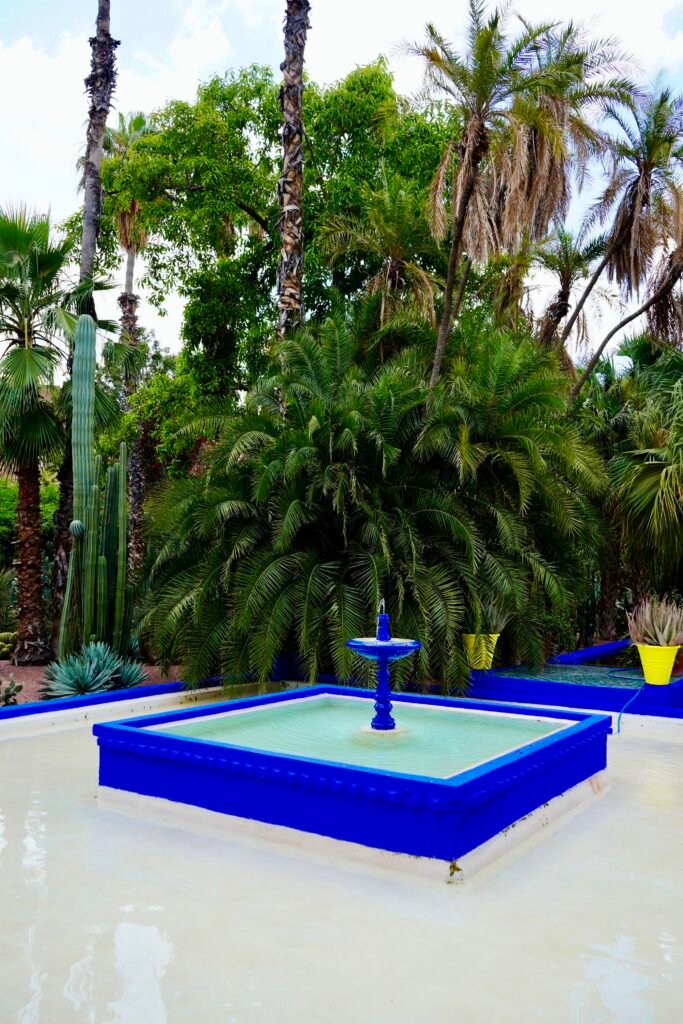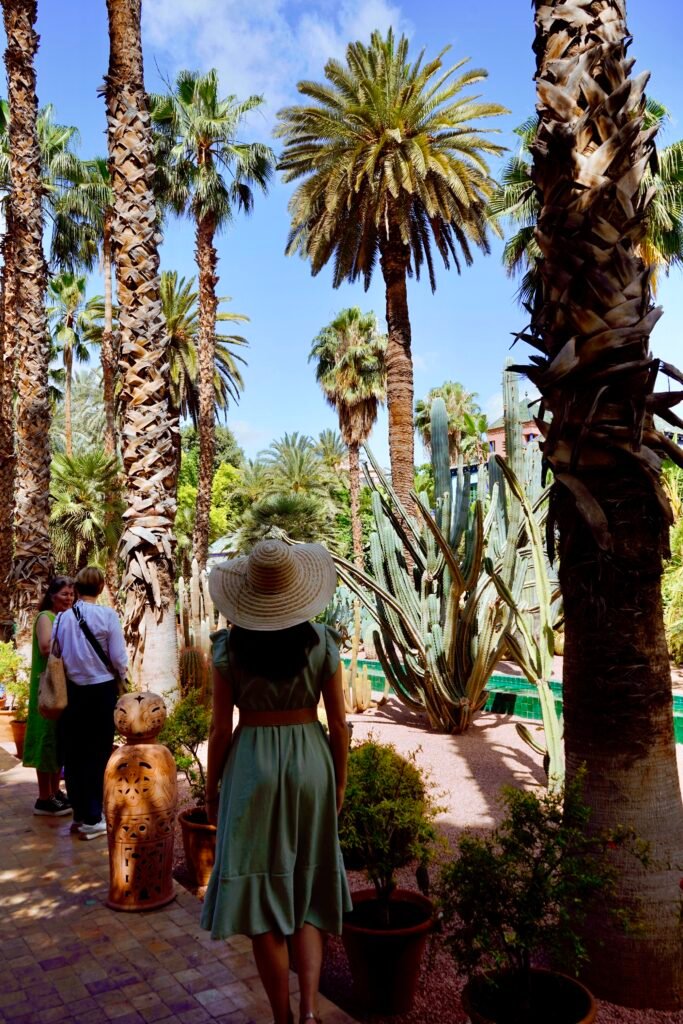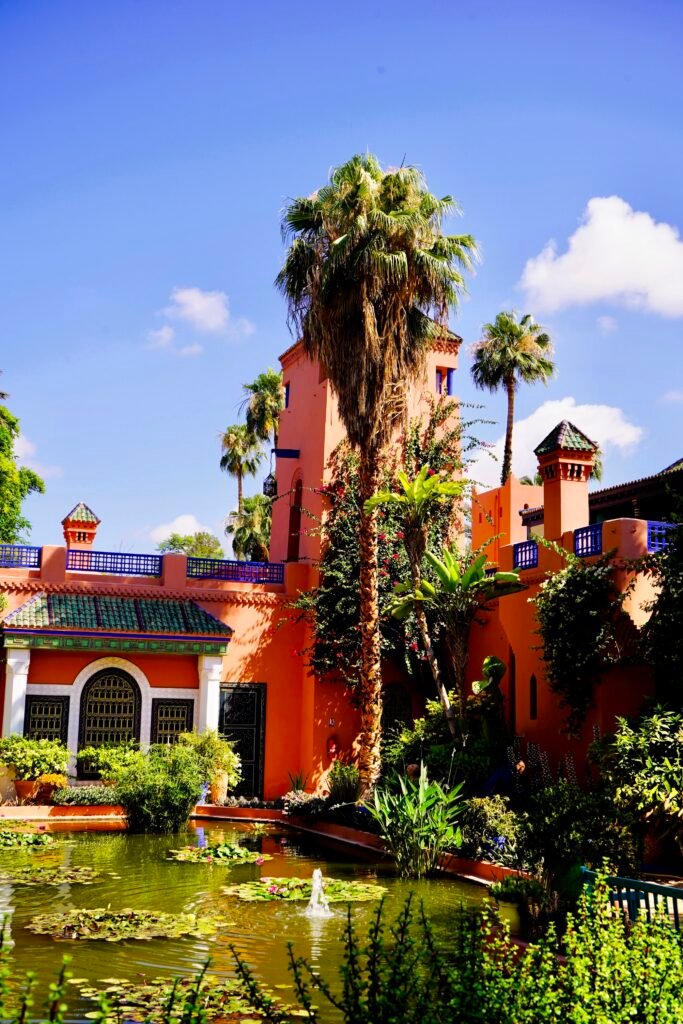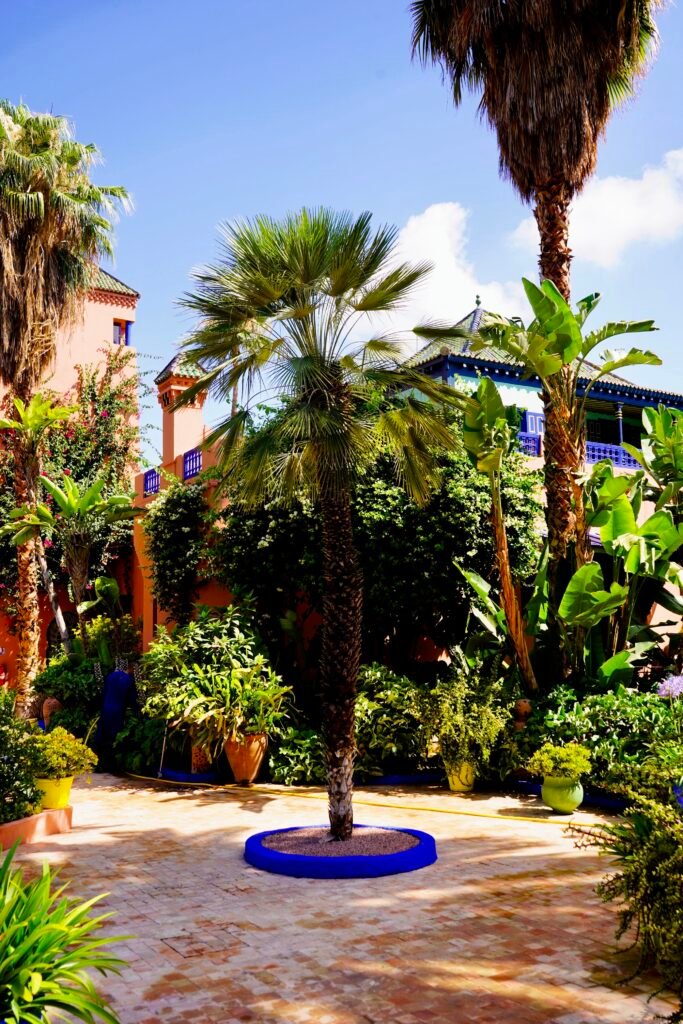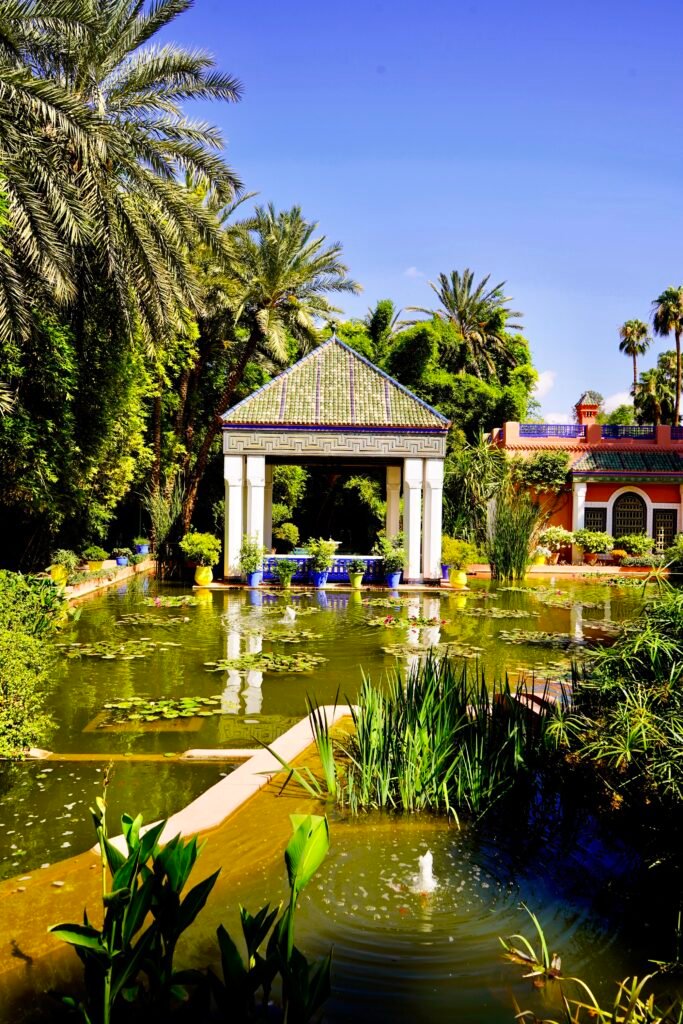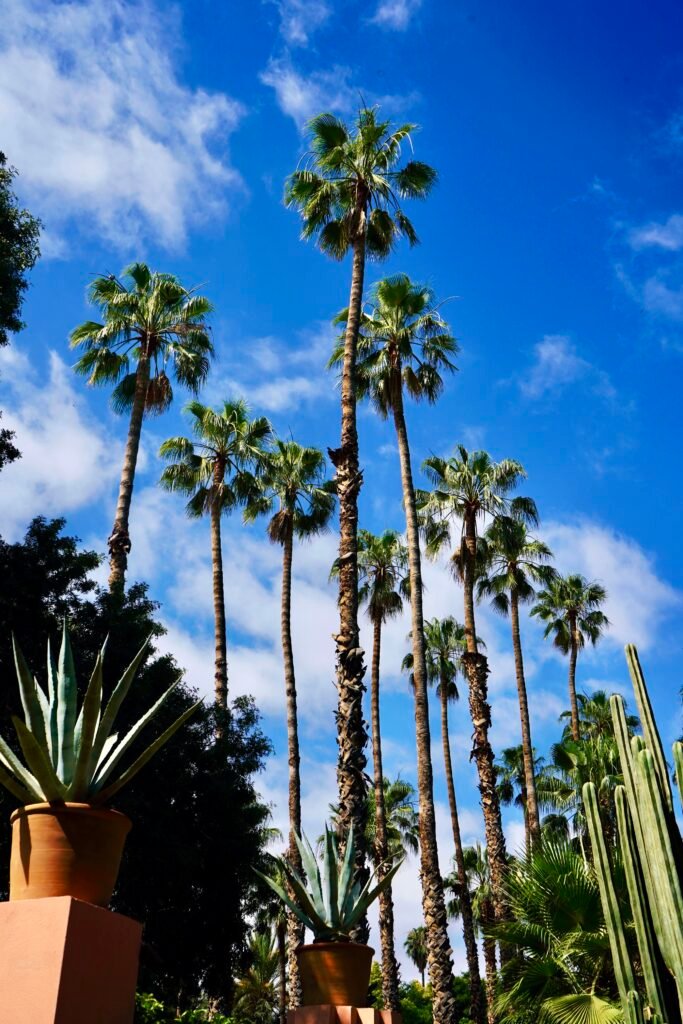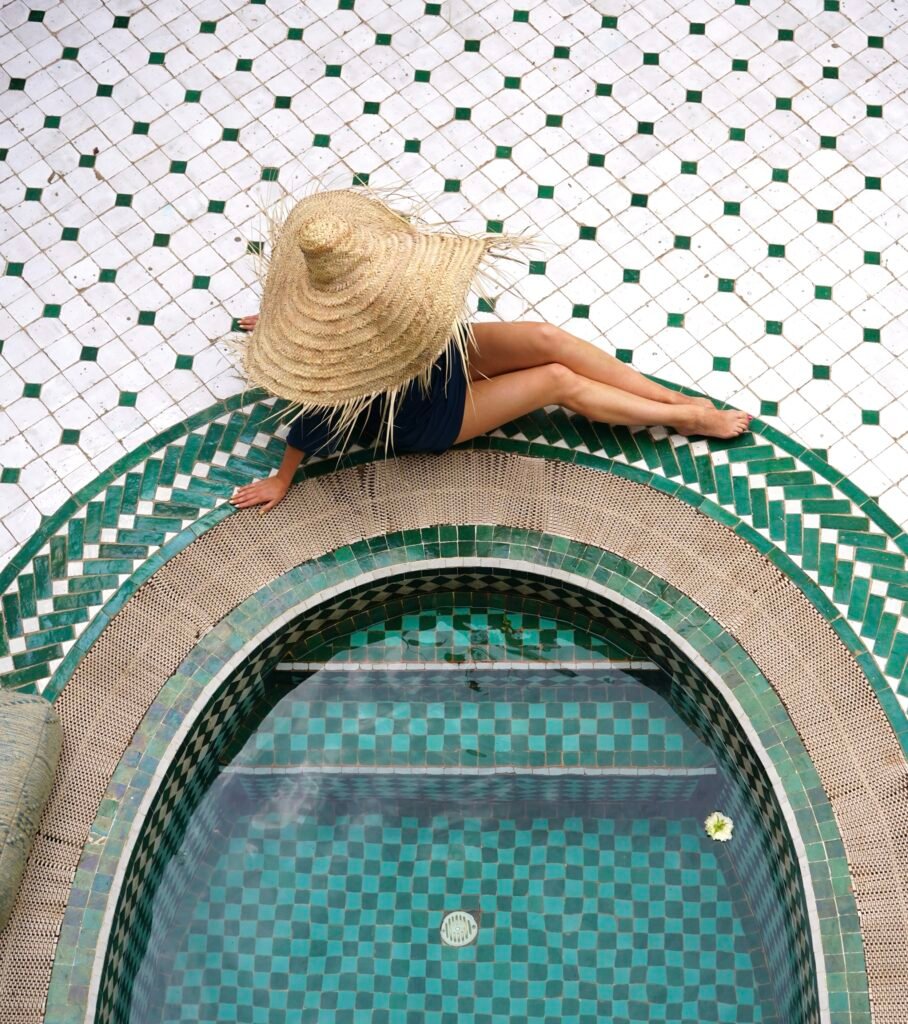
Ever wanted to discover more of Morocco than just Marrakech? In June 2024, I took an 8-day road trip through Morocco with a guide who handled everything: driving, tickets, meals, and stops. This let us dive deep into Morocco’s beauty without any stress. We traveled from the Atlantic beaches to the bustling cities of Marrakech and Fez, tasted spicy food, and explored the Atlas Mountains and desert dunes. Each day brought new sights and flavors. It was such a beautiful experience, and I’m already planning my next trip back.
The Road trip started in Casablanca, where I landed and ended in Marrakech where I took the flight back home.
This article contains affiliate links, which means that I may earn a small commission, at no cost to you, for qualifying purchases.
If you’re up for an adventure, following my footsteps through Morocco could be just the ticket!
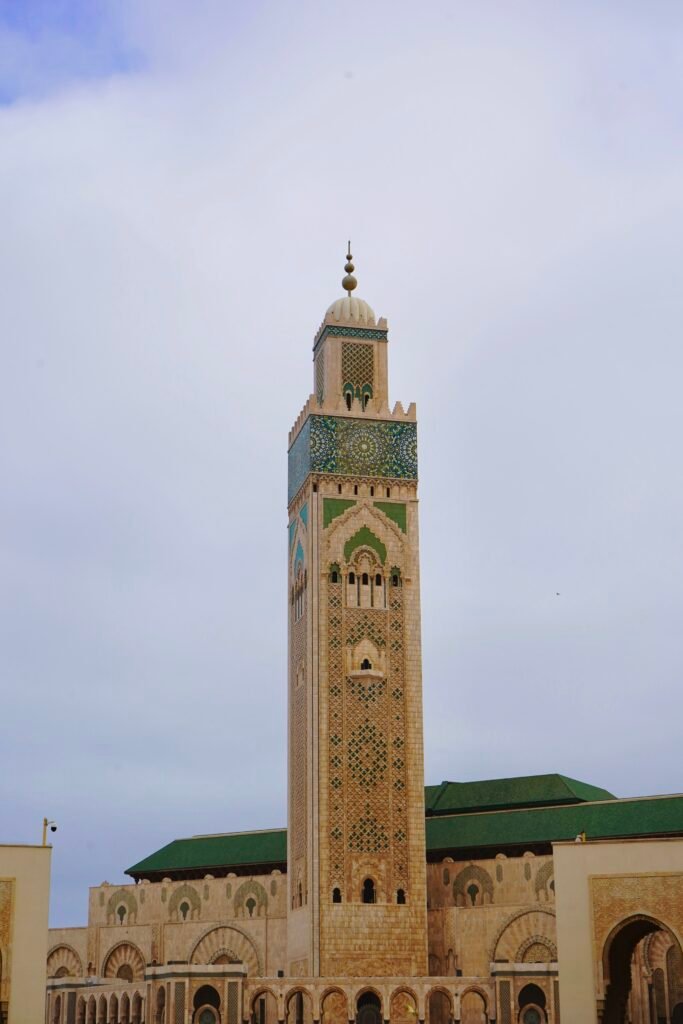
Things to know before traveling to Morocco
Do you need a visa to visit Morocco?
Citizens of the European Union do not need a visa for tourist stays of up to 90 days in Morocco. However, they must have a passport valid for at least six months. If you are from a country outside the European Union, you might need a visa to enter Morocco.
Check whether your country requires a visa to enter Morocco here.
What is Morocco’s currency?
The local currency in Morocco is the dirham (MAD). I recommend bringing some euros, dollars, or pounds to exchange upon arrival at the airport. It’s wise to change a small amount (around 30-50 euros) just to cover transportation to your hotel and any immediate expenses. Once settled in your hotel, ask the staff for advice on the best places to exchange money – they often know spots with more favorable rates than the airport.
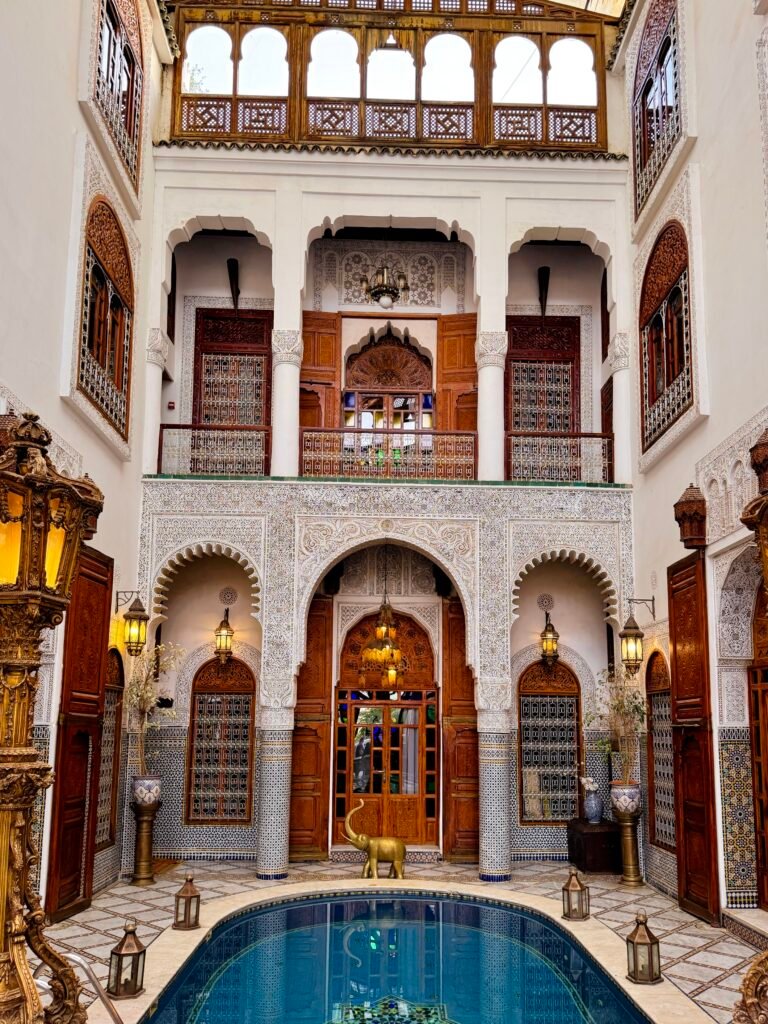
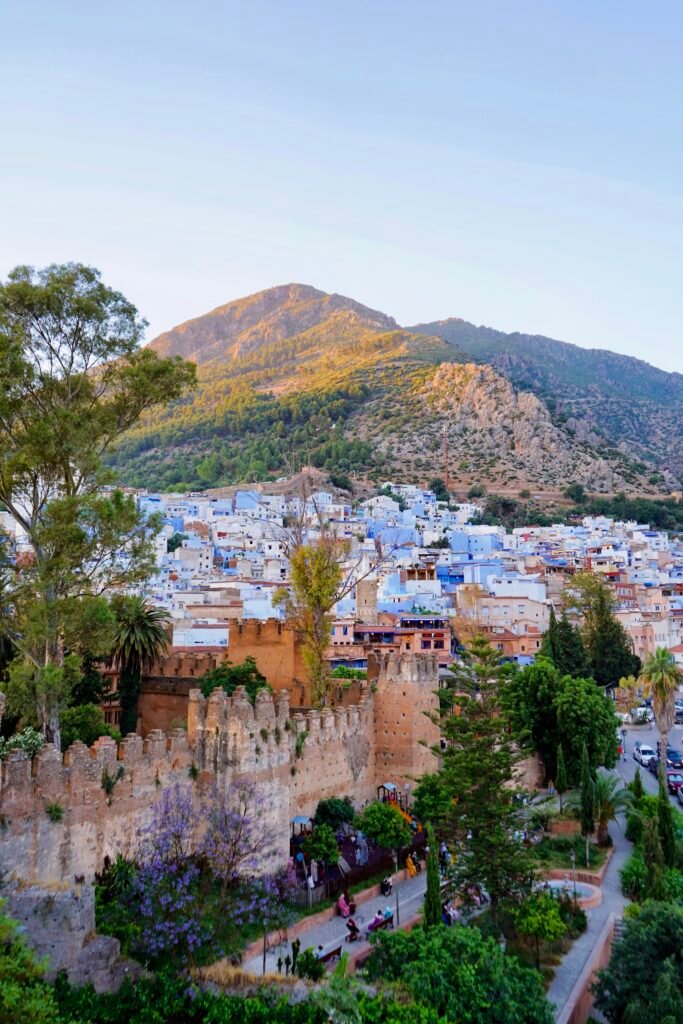
Where to buy a local SIM card or an eSIM?
Upon arrival, you can purchase a local SIM card at the airport to stay connected right away.
Alternatively, an eSIM provides a more convenient option. It integrates directly into your device, saving you time and helping you avoid high roaming costs. eSIMs are excellent for international travelers, allowing you to switch networks seamlessly. You won’t need to reinstall your eSIM each time you travel; simply choose your destination from over 150 options, and it will connect as soon as you arrive. Just make sure your phone is eSIM-compatible.
Do you need a travel insurance in Morocco?
Investing in travel insurance is crucial for any trip abroad, including to Morocco. It’s essential to be prepared for unforeseen circumstances that could disrupt your travel plans.
Personally, I always use SafetyWing, which is a reputable option that provides comprehensive coverage. Their policies not only cover medical expenses, including hospital stays, nursing care, and ambulance services but also offer protection for electronic items, trip cancellations, and luggage loss. What sets SafetyWing apart is its flexibility; you can customize the duration of your coverage to match the length of your trip.
What should you wear in Morocco?
Visiting Morocco, you’ll notice it’s a country with deep Islamic traditions, which influences the recommended dress code, especially for travelers wanting to respect local customs. In urban areas like Marrakech and Casablanca, tourists can generally wear similar clothes to what they might wear at home, but modesty is appreciated, especially in rural and religious settings. For such places, avoid shorts and sleeveless tops; instead, opt for clothing that covers shoulders and knees. A shawl or scarf is also handy to carry for impromptu cover-ups.
For my travels, I align closely with local norms, often choosing long skirts or dresses and ensuring my shoulders and knees are covered, which has made interactions smoother and more respectful.
Footwear should be comfortable and practical. The cobbled and often uneven streets of medinas call for sturdy walking shoes. If you’re planning excursions into the desert, closed-toe shoes are a must to protect against rough terrain and sand.


How is the climate in Morocco?
Morocco’s climate varies significantly across different regions. Along the coast, the weather is typically Mediterranean with mild, wet winters and hot, dry summers. Inland, especially in mountainous areas, the climate can be more temperate and humid, offering a respite from the heat. Meanwhile, the southern and eastern parts of the country, particularly as you approach the Sahara, feature arid and hot conditions.
If you’re visiting in the spring or summer, lightweight and breathable clothing is ideal. Nights can cool off, so a jacket or sweater should be on your packing list, especially if you’re venturing into higher elevations or the desert where temperatures can drop unexpectedly at night.
For autumn and winter travel, daytime temperatures in cities like Marrakech and Tangier are usually comfortable, making casual wear like sweaters and jeans appropriate. However, if your itinerary includes mountain villages or high-altitude locations, pack a coat and consider thermal layers to stay warm as temperatures can be significantly cooler.
Where to rent a car in Morocco?
If you want to see Morocco at your own pace, renting a car is a great idea. The roads are smooth and well-kept, making it easy to drive. Plus, in Morocco, you drive on the right side of the road, just like in Europe, so it feels familiar.
Renting a car lets you discover Morocco’s beautiful landscapes, from the high mountains to the open deserts and the coastal roads, all on your own schedule.
My go-to choice for renting a car is always DiscoverCars. This platform compares prices from multiple car rental agencies, allowing you to find the best deal. This saves both time and effort compared to searching for rentals independently.

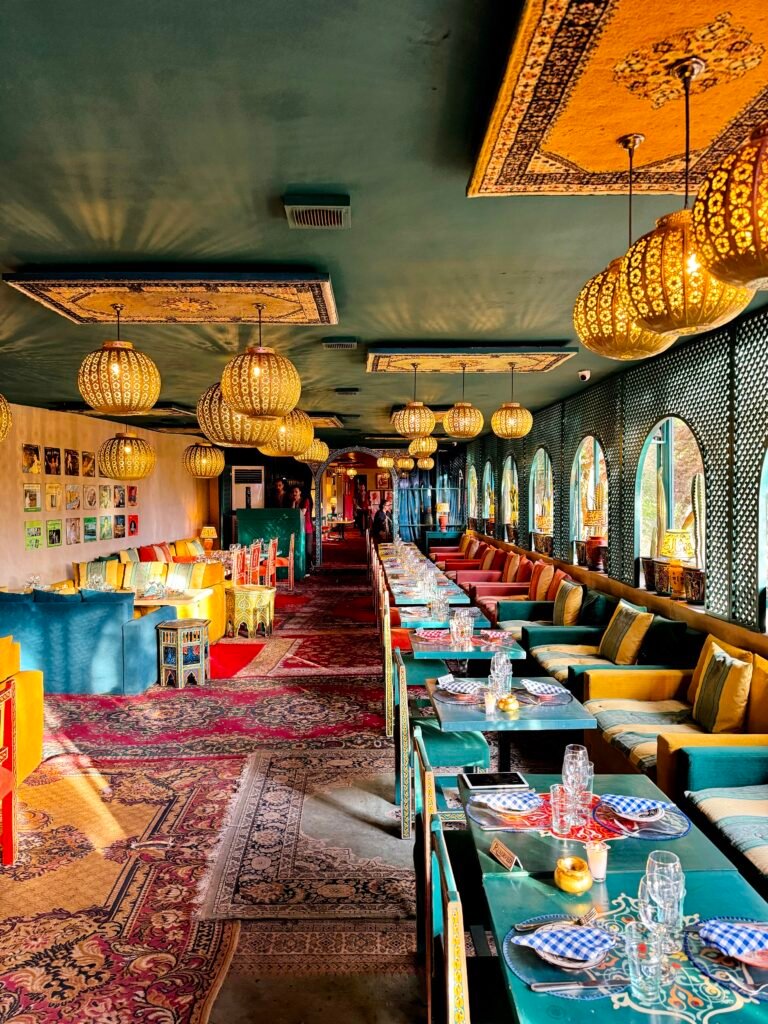
Other essential Morocco travel tips
Bargaining: In Morocco, negotiating prices is part of shopping. Street markets and souvenir shops often start with prices that are 25-50% higher than what the seller really expects. Don’t be shy to haggle; it’s expected.
Cash is preferred: In big cities, you can use credit cards, but in rural areas, smaller shops, and markets, cash is necessary. Moroccan ATMs can be unreliable, especially in tourist areas where they might run out of money. It’s wise not to carry too much cash to avoid losing it to pickpockets. Keep extra cash safe in your hotel.
Taxi prices: Taxi drivers often try to charge tourists more, especially at airports. To avoid stress, use an official airport transport service or confirm the fare before starting your ride. If you decide to negotiate after the ride, stick to the agreed price.
Drinking water: Enjoy the delicious Moroccan food but be cautious with street food to avoid stomach troubles. Always drink bottled water. For brushing teeth or washing your face, it’s safer to use bottled water too.
Tipping: Tipping is common and appreciated for good service. In restaurants and cafes, a tip of about 10% is usual, unless a service charge is already included. For hotel staff, a small tip for each service is customary, typically 10-20 Moroccan Dirhams. For a private tour guide or driver, consider tipping 100-200 MAD per day. While tipping taxi drivers isn’t mandatory, rounding up the fare is common.
Street services: Be cautious if someone on the street offers to help with directions or luggage as they will likely expect a tip. If you prefer not to tip, it’s best to decline any unsolicited help.
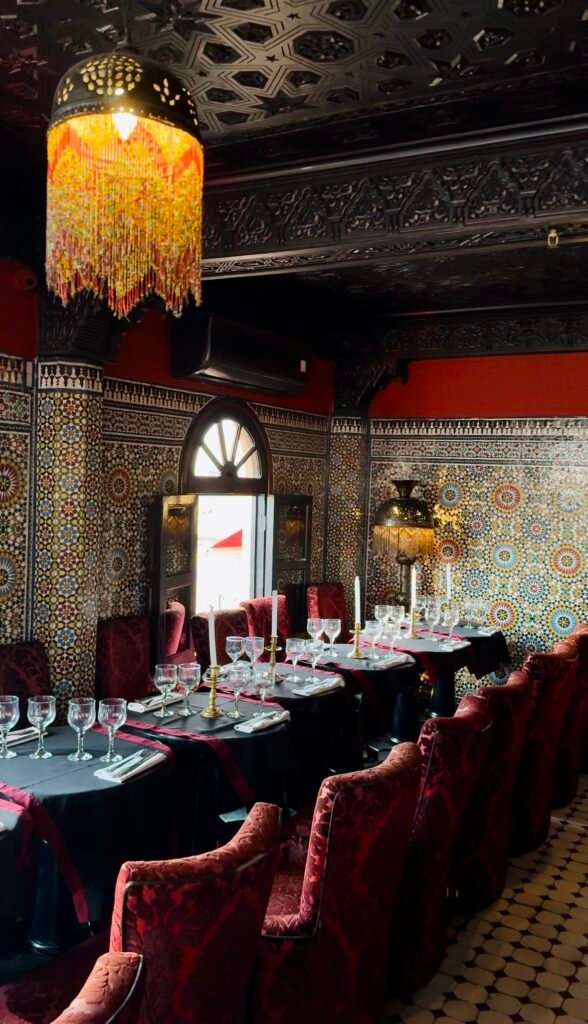
DAY 1
Rabat & Chefchaouen
First stop: Rabat
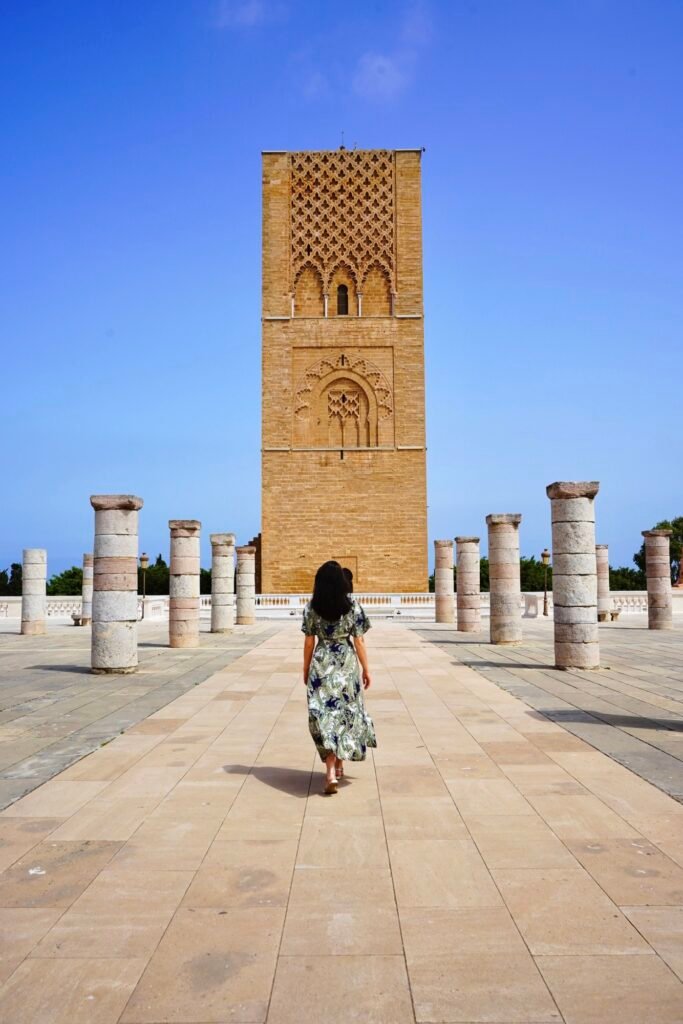
On our first day, after breakfast at 7:30 a.m., our guide picked us up and we drove from Casablanca to Rabat, which took about an hour.
In Rabat, we visited Hassan Tower and the Mohammed V Mausoleum, both located on one of the city’s highest points. After exploring these sites, we hit the road again for an 4-hour drive to Chefchaouen, the famous blue city, know as the ‘Blue Pearl of Morocco’ or the ‘Santorini of Morocco’.
Rabat has been the capital of Morocco since 1912. It’s a coastal city and a bit more modern, especially because it’s home to many embassies and government offices. While it might not be as lively as Marrakech, as maze-like as Fez, or as romantic as Tangier, Rabat has its own appeal. There’s a 12th-century fortress by the sea, lots of green spaces, palm-lined streets, and a marketplace that’s easy to browse and less crowded than others.
Best places to visit in Rabat:
- Hassan Tower & Mohammed V Mausoleum: Important historical sites
- Kasbah of the Oudayas: A small version of Chefchaouen
- Rue de Consuls, the Medina: A quieter, more relaxed market area
- Complexe des Oulja: A place to see local art and crafts
- Beach day
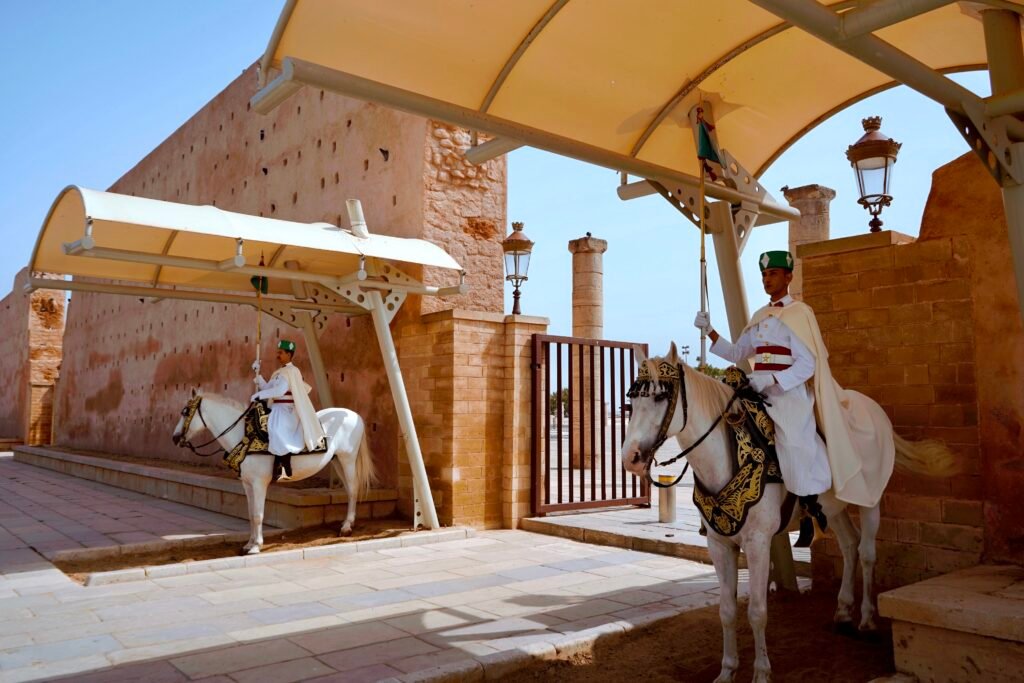

- Mohamed VI Museum of Modern and Contemporary Art
- National Zoo of Morocco: Great for a family day out
- City of Salé: Just across the river, worth a visit for its history
- Chellah: An ancient fort with roots going back to the Phoenicians
- The Mawazine Festival: A big music festival with lots of performances
- Jidar ‘Toiles De Rue’ Street Art Festival
Second stop: Chefchaouen
We arrived in the early afternoon, we checked-in and then a local guide picked us up and made a little round tour with us in the city.
The city of Chefchaouen is located at about 600 metres above sea level in the foothills of the Kaʻala mountain in the western part of the Rif mountain range, in northwestern Morocco. The city consists of a medina, the historical walled town, and a new town that has grown outside the former city walls. 3-4 hours are enough to walk through the whole city.
Why is Chefchouen painted in blue?
Some say it was painted blue as a mosquito deterrent. While others look to history for answers. In the 1400’s Chefchaouen became home to many Jewish and Spanish refugees. A few decades later, they began painting their doorways the colour blue. And the reason for this? Well so it is said, the colour blue represented the colour of the sky and therefore a closer presence to god.
These days, it could probably be said that Chefchaouen has found fame in their brightly painted streets, alleys and door ways. And as result, the tradition continues!
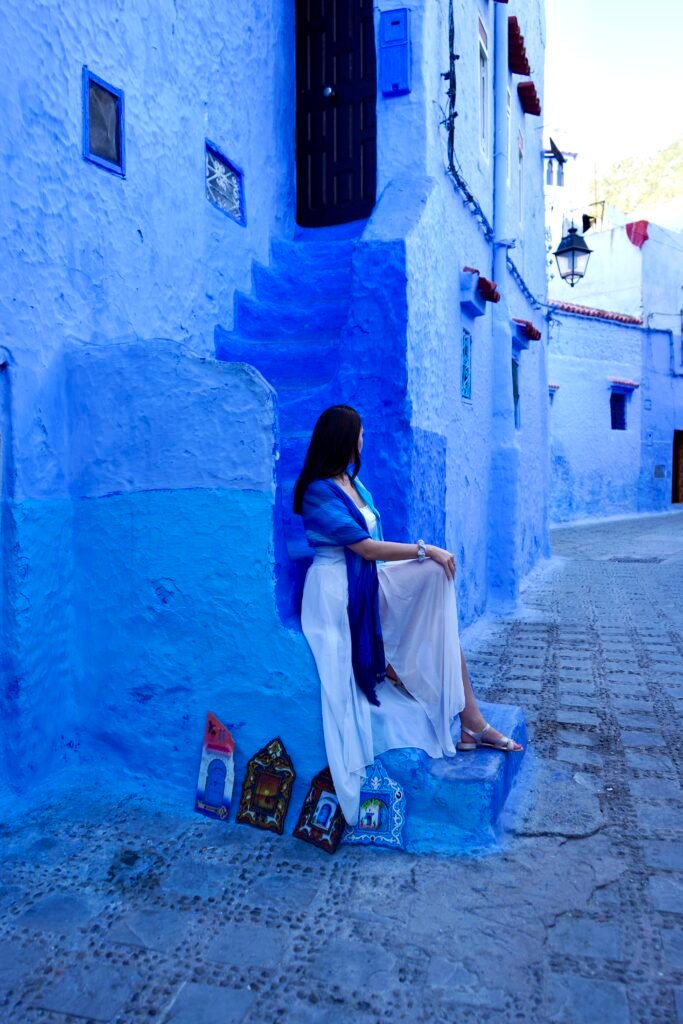
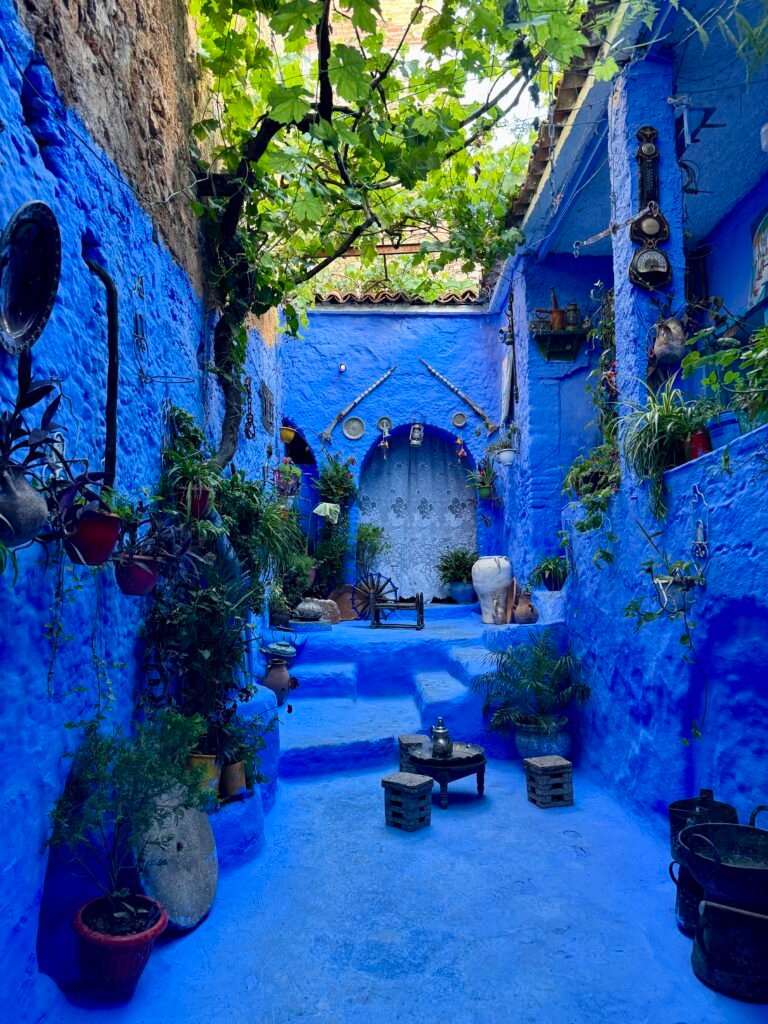
Is Chefchaouen worth the visit?
It depends largely on your Moroccan Itinerary. Chefchaouen is in the northern end of Morocco. So if your travel itinerary includes, the likes of Tangier, Casablanca or Tetouan, then yes we say Chefchaouen IS WORTH a visit.
Best things to do in Chefchouen:
- Wander the blue streets of the old medina
- Shopping in the Chefchaouen bazaars and shops
- Square Outa El Hammam & El Haouta
- Berber caravan market
- Visit the Kasbah Museum & Gardens
- Watch the sunrise or sunset from the Spanish Mosque
- Take a cooking class
- Visit the Hashish farms
- Take a trip to Akchour to see the God’s bridge

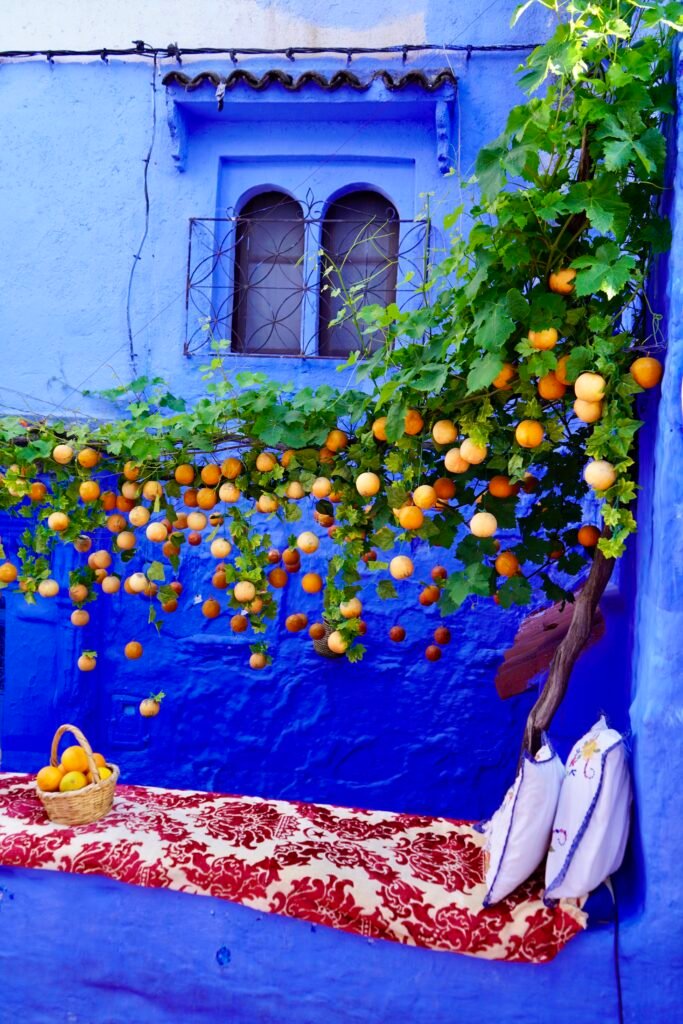
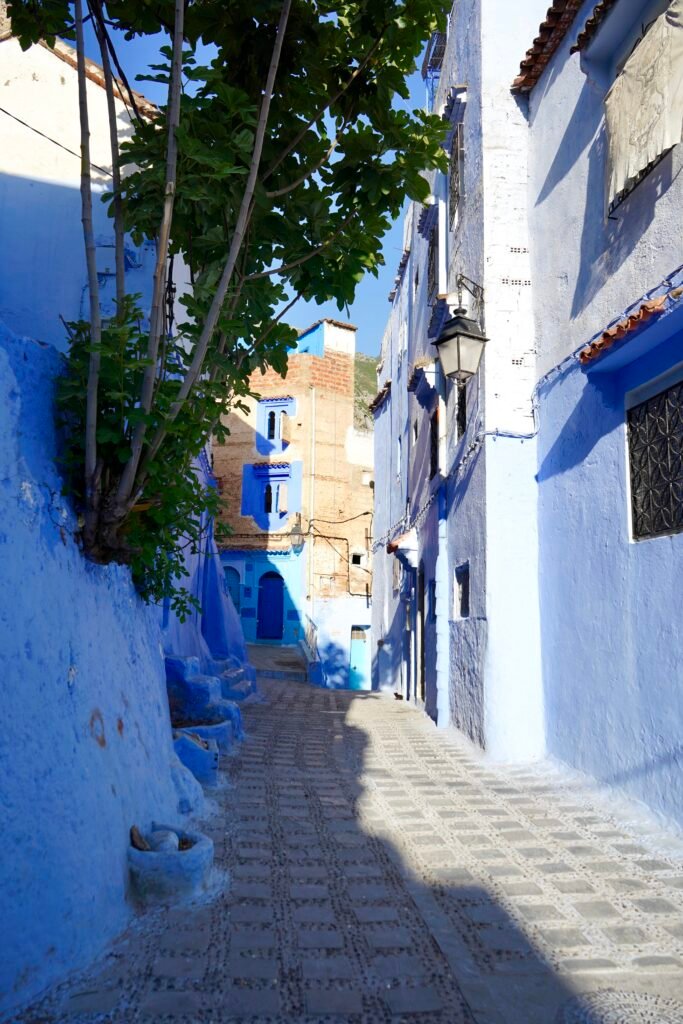
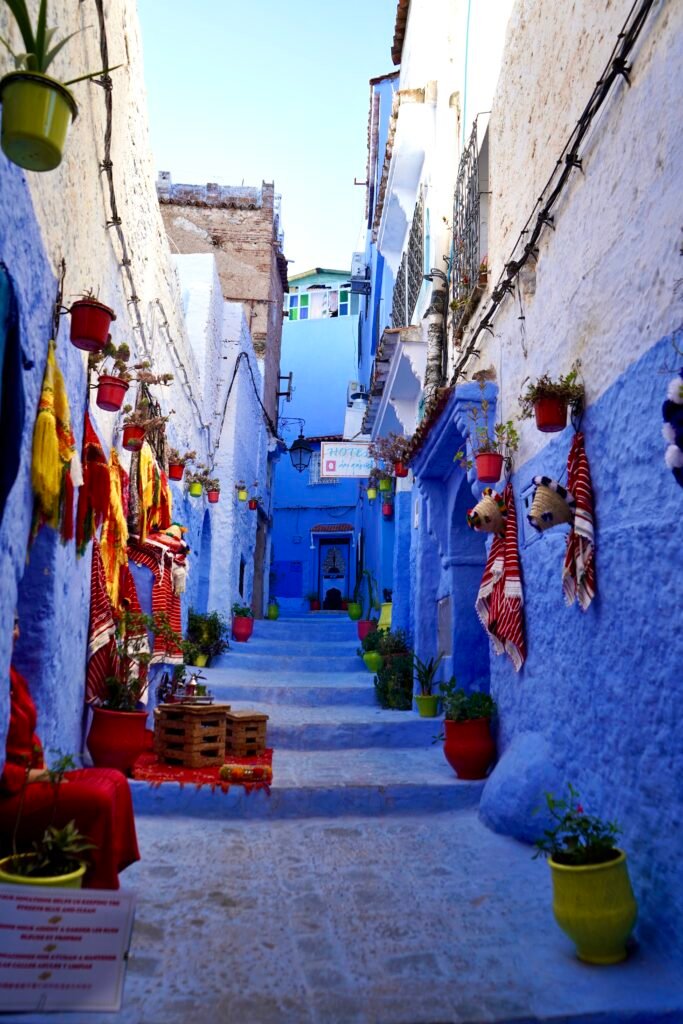
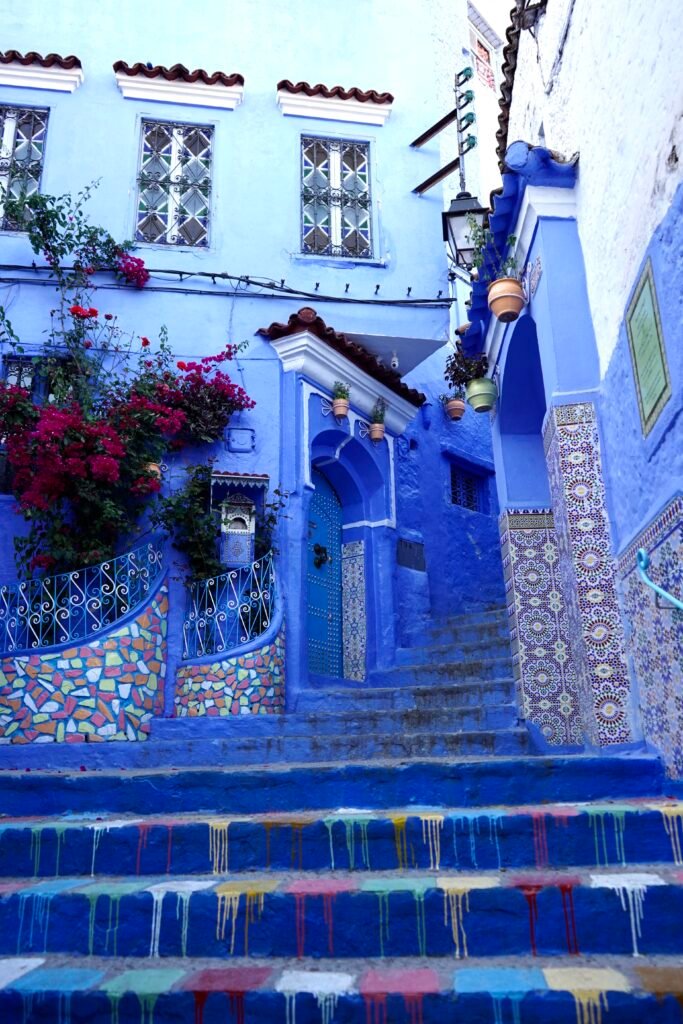
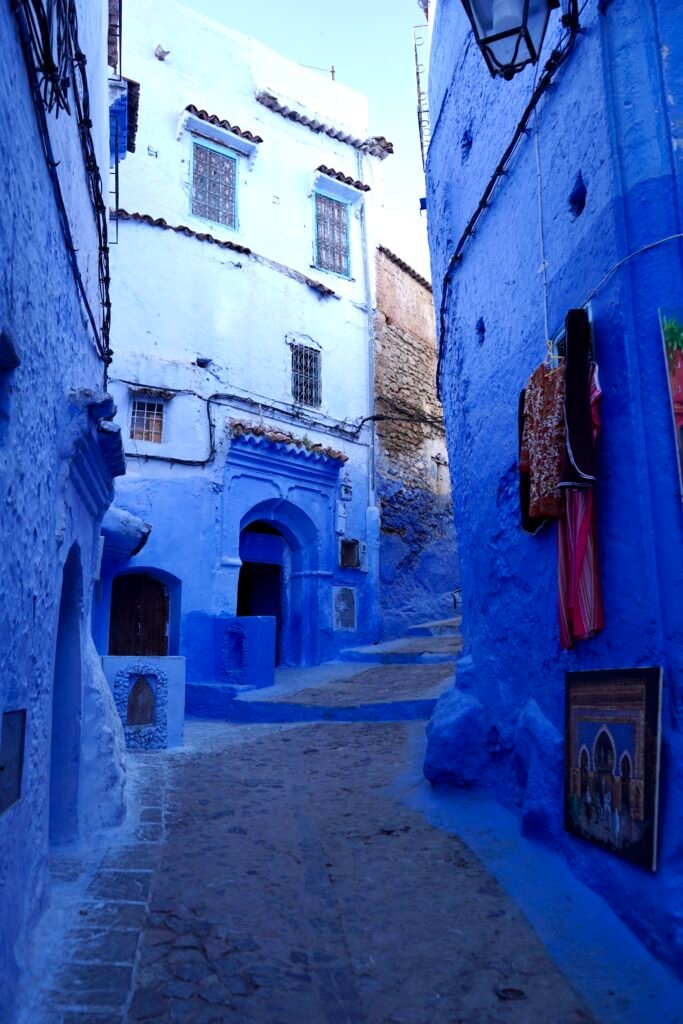
DAY 2
Fes
We got up early for breakfast before setting out on a five-hour drive from Chefchaouen to Fes. We arrived around lunchtime and started our visit with a meal in the city. After lunch, we began our tour of Fes.
What to know about Fes?
Fes is Morocco’s second-largest city and serves as the capital of the Meknes region. It’s located inland at the northern end of the country and is about a five to six-hour drive north from Marrakech. Known as Morocco’s cultural capital, Fes is a must-see for anyone looking to dive deep into Moroccan culture. The city’s Medina, Fes el-Bali, is not only the largest in the world but also the oldest, packed with centuries of history and culture.
Fes’ medina is a fascinating place, but exploring it can be challenging since it’s a giant labyrinth where you can easily get lost. I would recommend to book a local guide for the day to ensure a smooth visit tour with all the main attractions included. Our local guide was organised by the travel agency we booked, but you can easily find local guides on GetYourGuide.
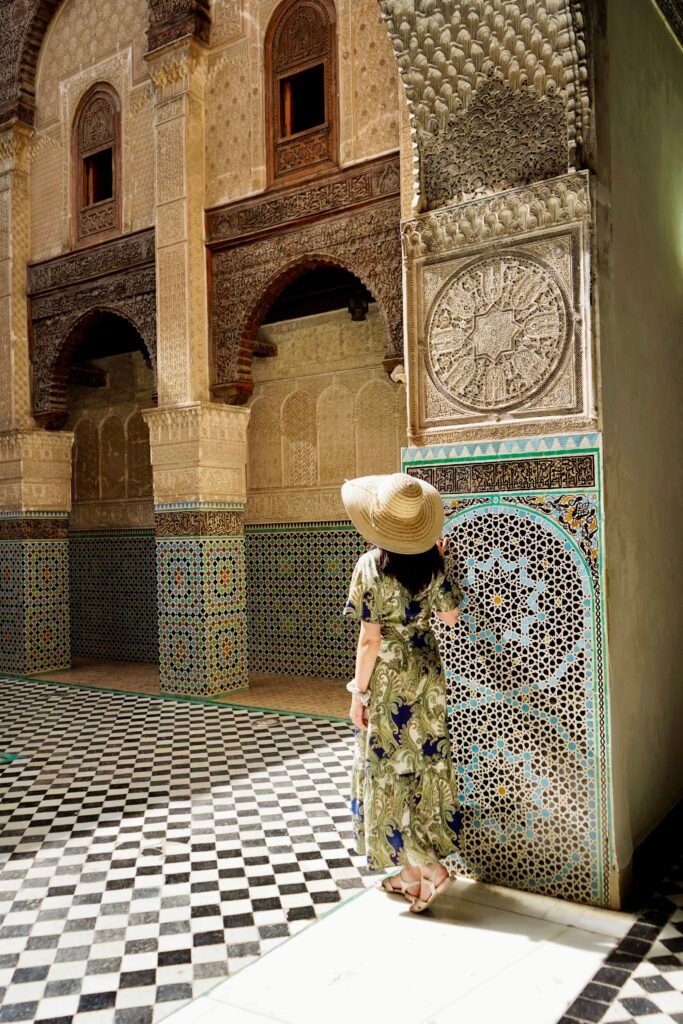
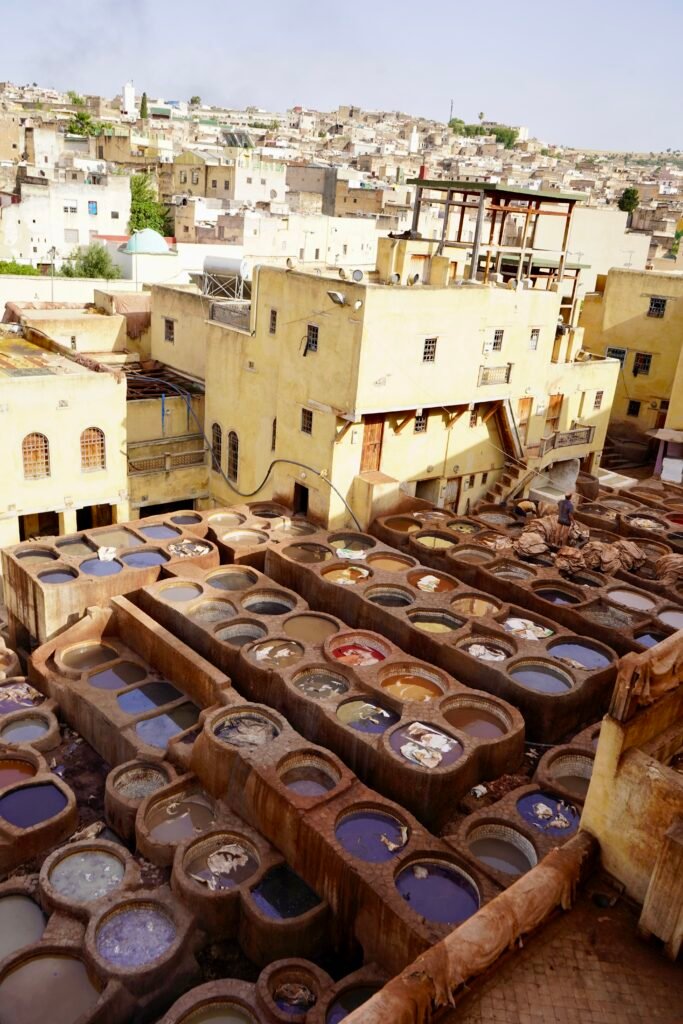
Is Fes worth visiting?
Absolutely! Unlike Marrakech, where tourism heavily influences the city’s character, Fes maintains a more authentic vibe. Many people living near Marrakech’s old medina depend on tourism, but that’s not as much the case in Fes. Here, you can see more of everyday life, making it feel less touristy than Marrakech.
For me personally, navigating the medina in Fes was an unforgettable adventure. It’s a massive labyrinth full of life and history.
Here are some of the best places to visit in Fes:
- Bab Boujloud (The Blue Gate): A striking entrance to the old city, known for its beautiful blue tiles.
- Bou Inania Madrasa: An Islamic school
- Chouara Tannery: One of the three remaining tanneries in the Medina. It’s the largest and most photographed, offering a unique glimpse into traditional leather making. You can view it from shop balconies or the ground floor. For balcony views, it’s wise to agree on a price before entering; 10 MAD per person is standard. To visit the ground level, head to Rue Chouara and follow the white arch down to the workshops and the entrance.
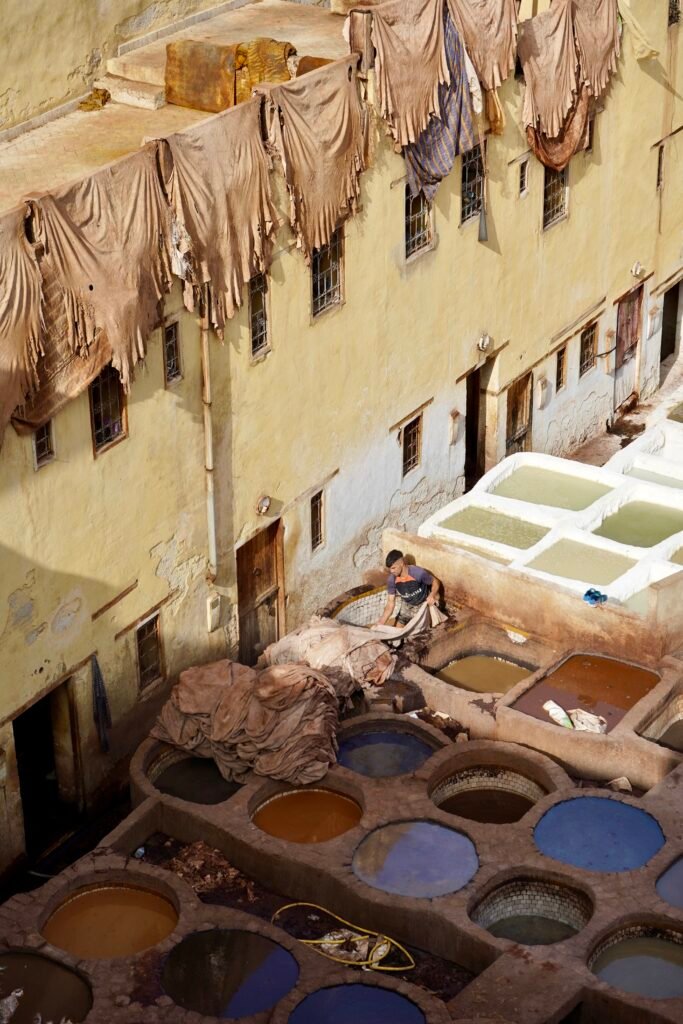
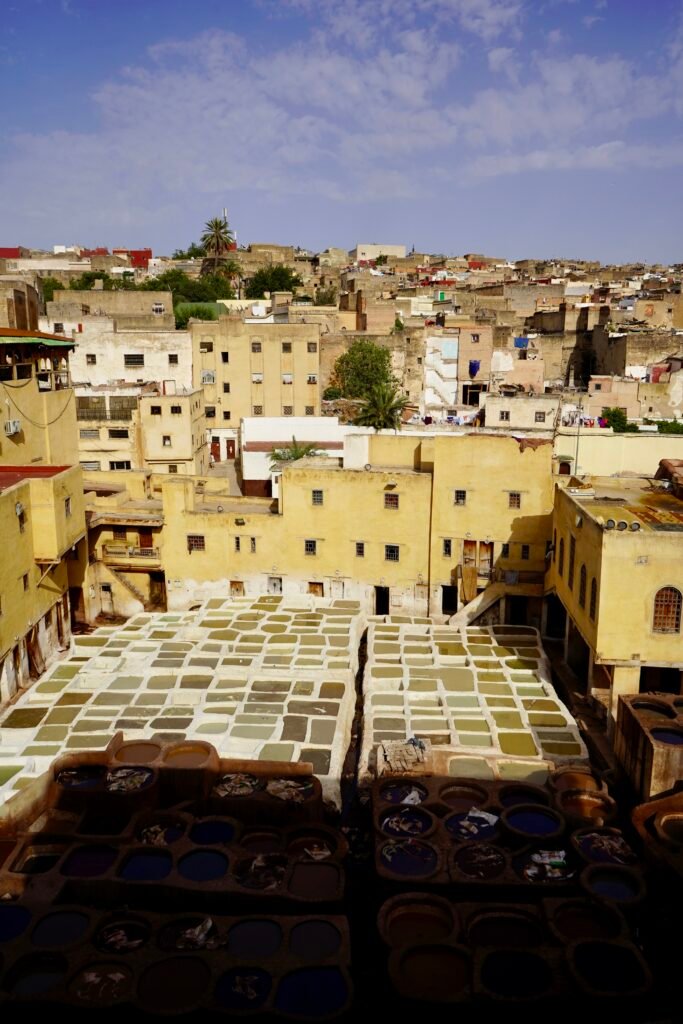

- Kairaouine Mosque: Home to Africa’s oldest university
- Al Atterine Madrassa: Another stunning Islamic school, known for its beautiful design and craftsmanship.
- The Royal Palace (Dar Al-Makhzen): Not typically open to the public, but the grandeur of its gates makes it worth a visit.
- Maze-Like Souks: Bustling market streets filled with goods from spices to textiles.
- Place Nejjarine and Nejjarine Museum of Wooden Arts & Crafts: A square featuring a museum dedicated to woodwork and carpentry.
- Marinid Tombs: Ancient ruins offering a panoramic view of the city.
- Jnan Sbil Gardens: A peaceful park near the city center with a pond, lovely gardens, and birds, offering a break from the city’s hustle.
- Zawiya of Moulay Idris II: A mausoleum dedicated to the founder of Fes, an important spiritual site.
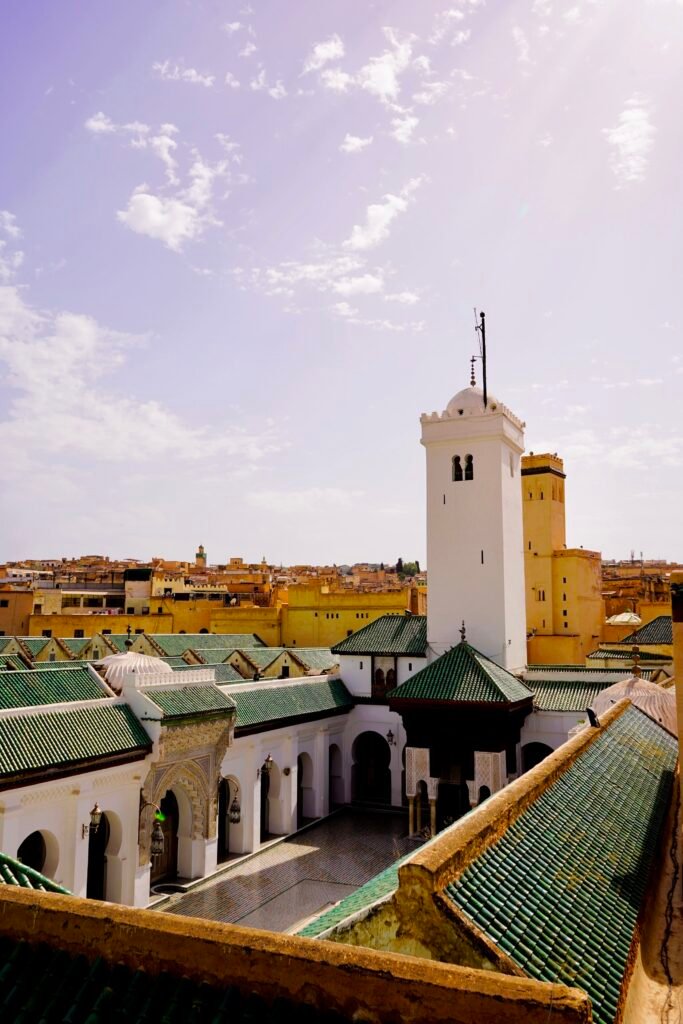
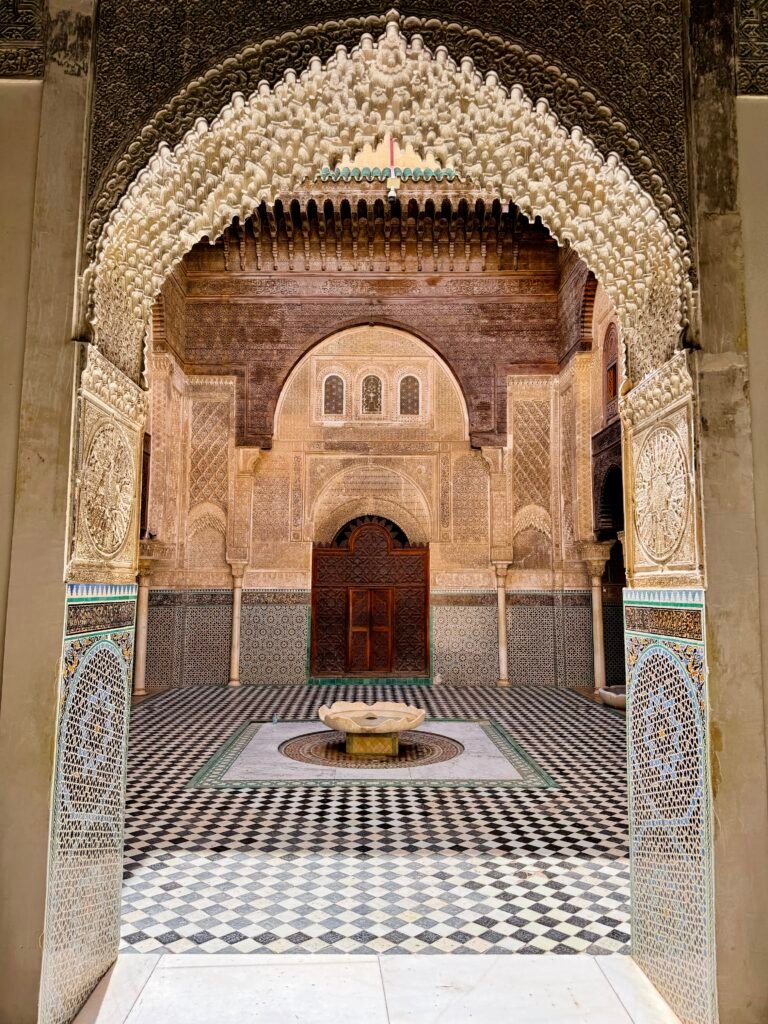
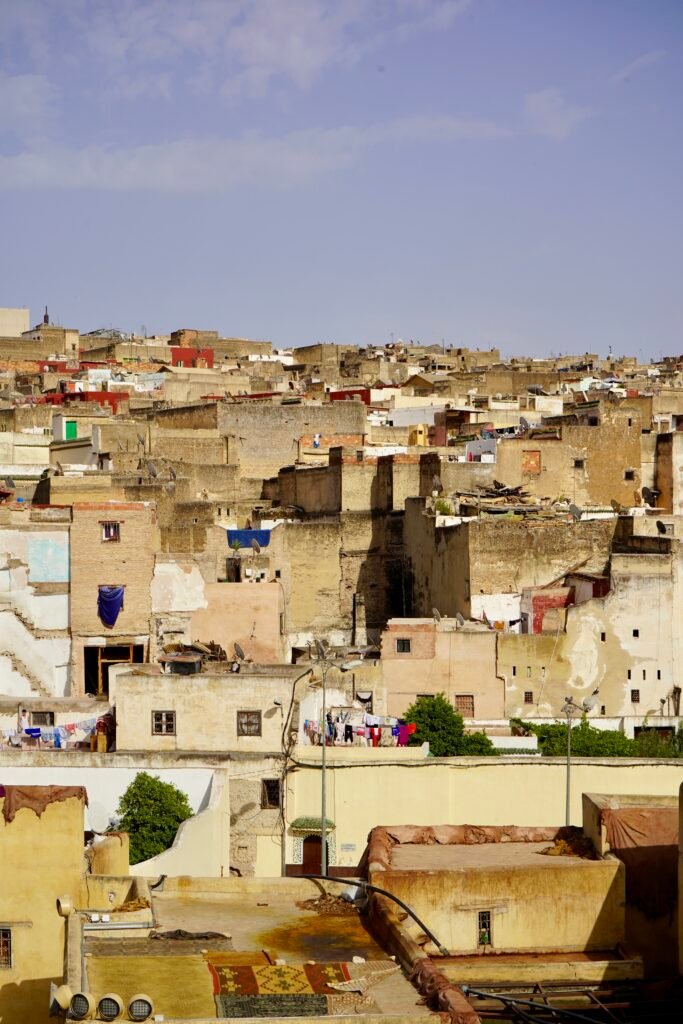
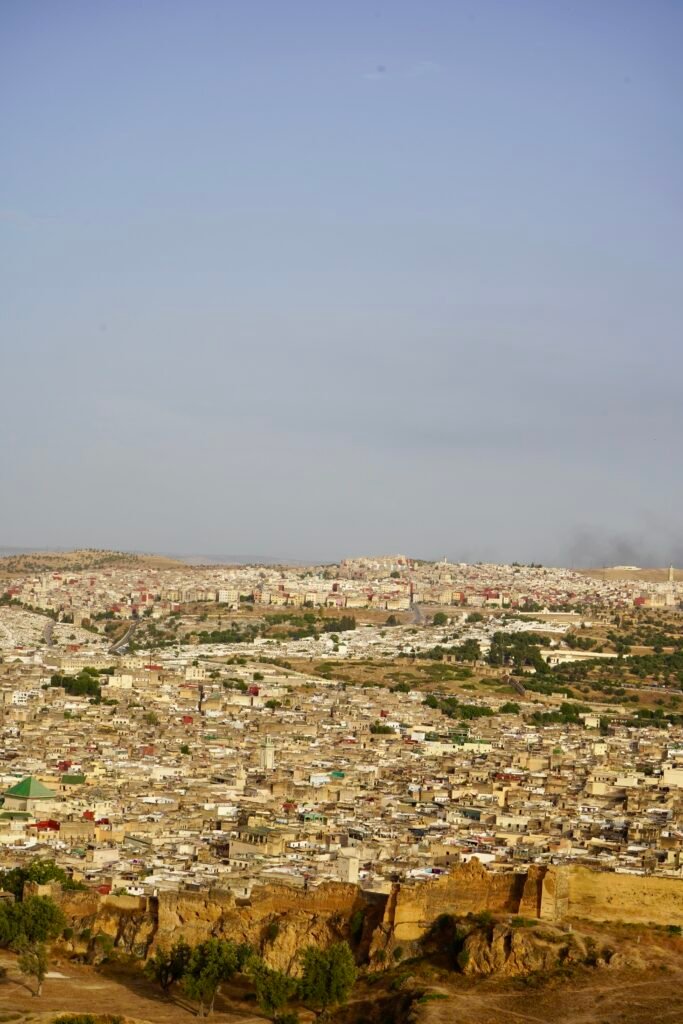
DAYS 3 & 4
Merzouga: Sahara Desert
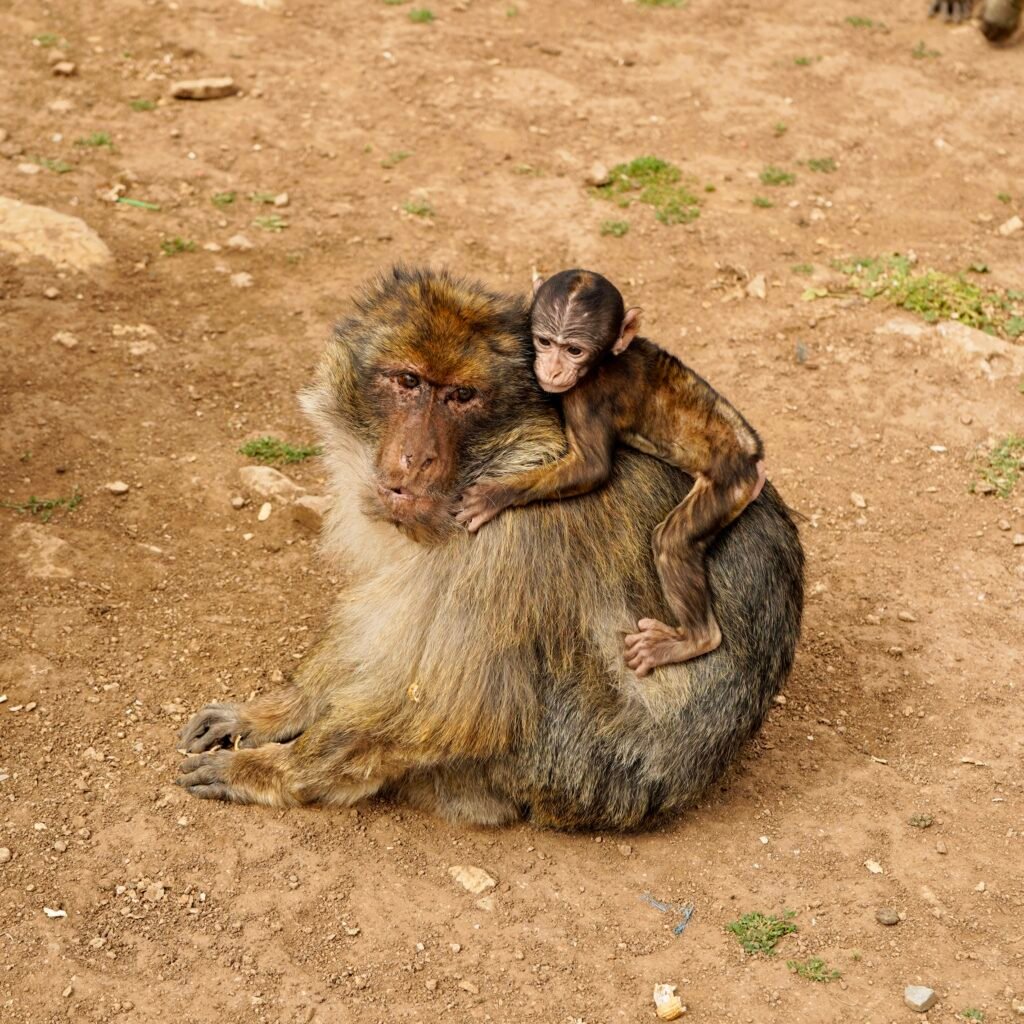
Early in the morning, we set off for an eight-hour drive south, heading toward Merzouga at the edge of the Sahara Desert. Along the way, we stopped at the Cedar Gouraud Forest near Azrou, where we watched the rare Barbary macaques in their natural habitat. The drive continued through the Middle Atlas Mountains, and it was amazing to see how the landscape changed as we traveled.
How long should you stay in the desert?
If you’re planning a trip to the desert, I recommend at least three nights and two full days. This allows enough time to make the long journey worthwhile – it can be up to 10 hours from Marrakech – and to fully enjoy the experience. Staying in a nice hotel with a pool and spending a night in a desert camp are must-dos. Plus, you’ll have enough time for activities like quad biking, camel riding and sandboarding.
First stop: Hotel in the desert
We reached our stunning hotel ‘Kanz Erremal’ in the early afternoon in Merzouga.
Storytime:
We were all set for a relaxing afternoon by the pool when out of nowhere, a massive sandstorm swept in – apparently a rare occurrence in this region! You could say we were “lucky” to witness such a spectacle. But the storm knocked out the power and water supply in the whole village, leaving us without electricity or running water. So, there we were, having a candlelight dinner and spending a sweltering night without air conditioning. What a memorable experience that turned out to be!
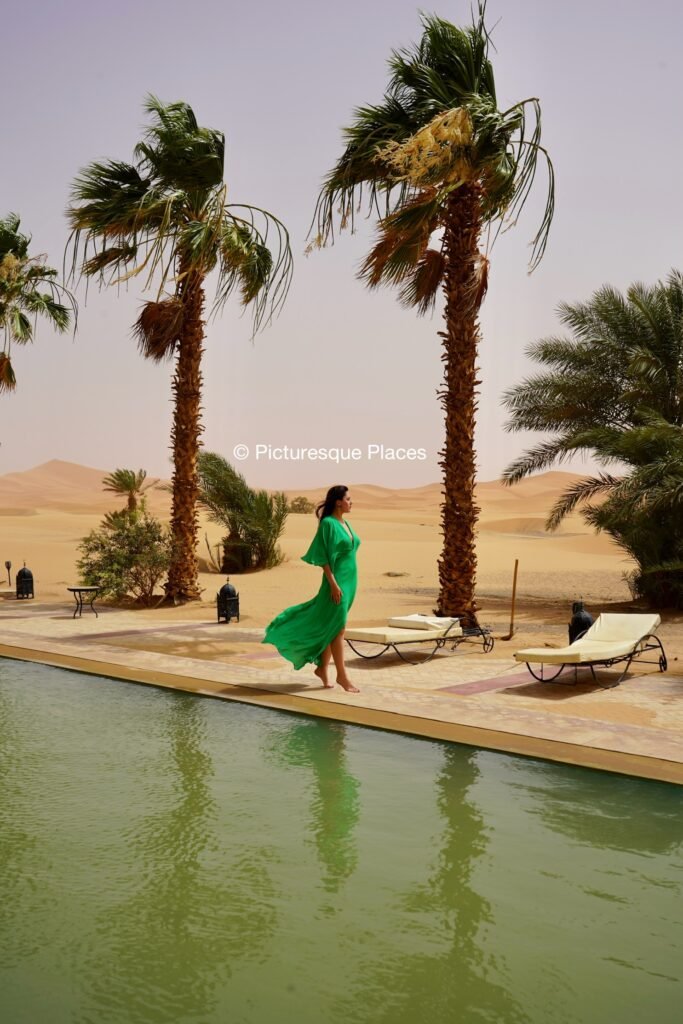
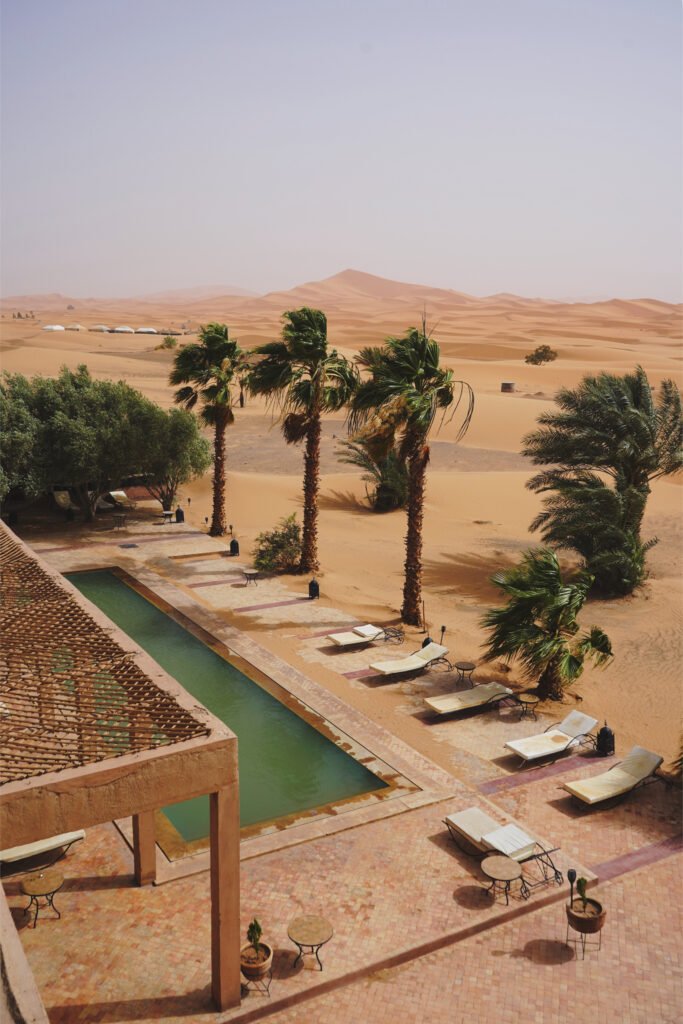
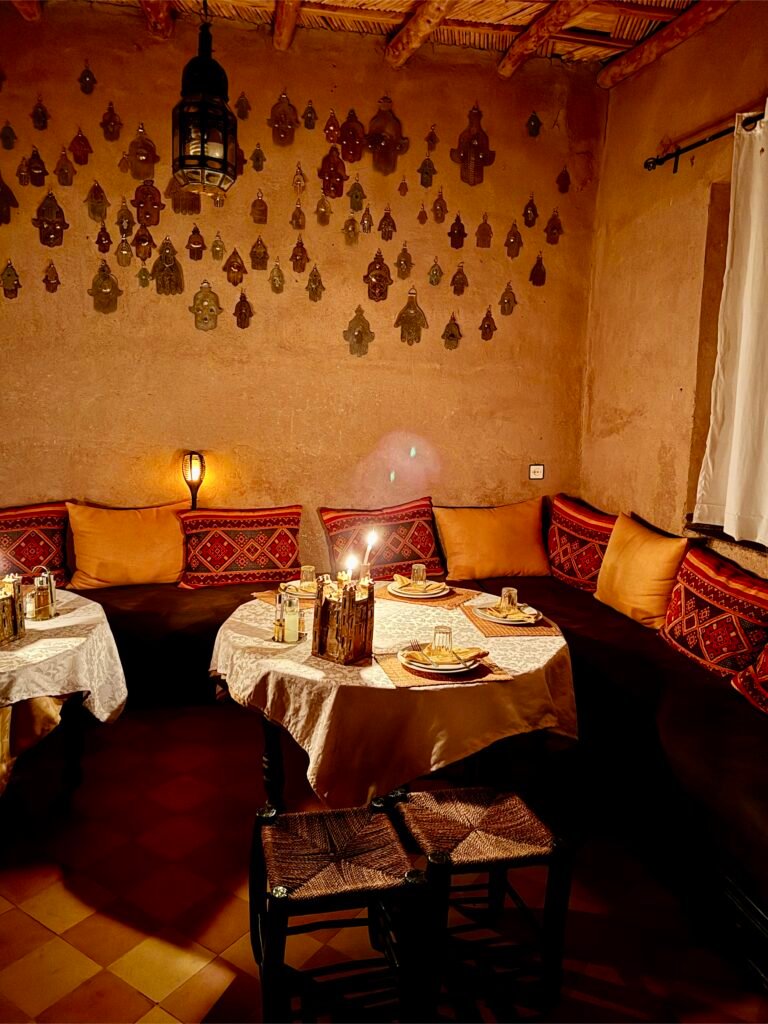
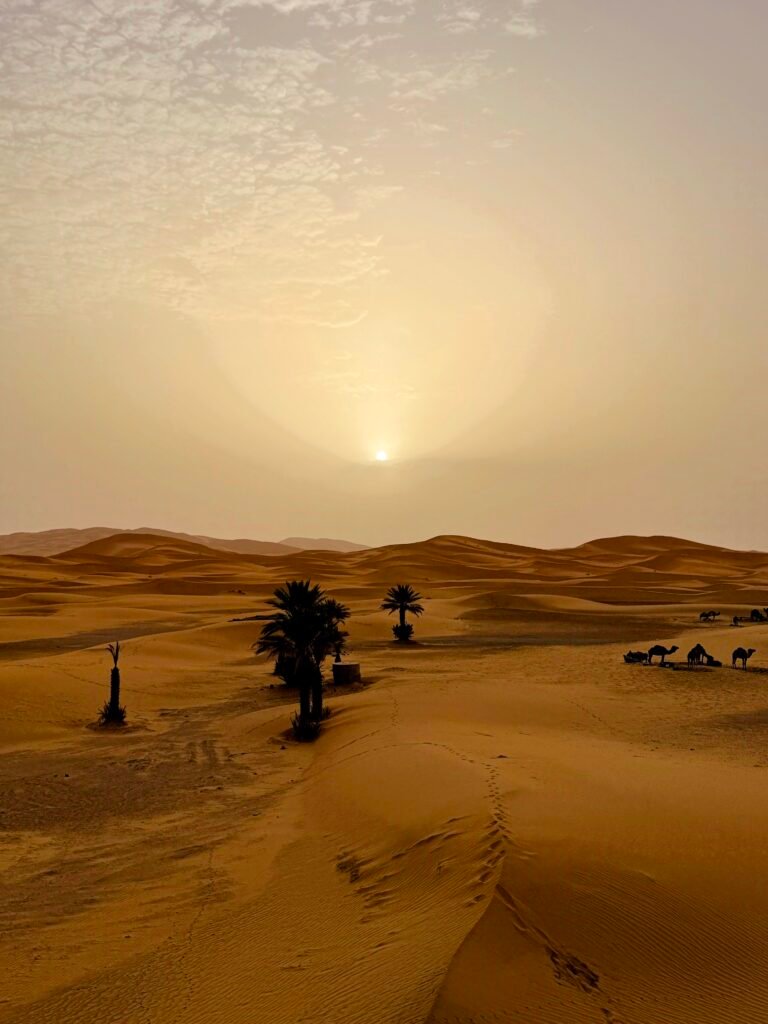
Second stop: Erg Chebbi dunes
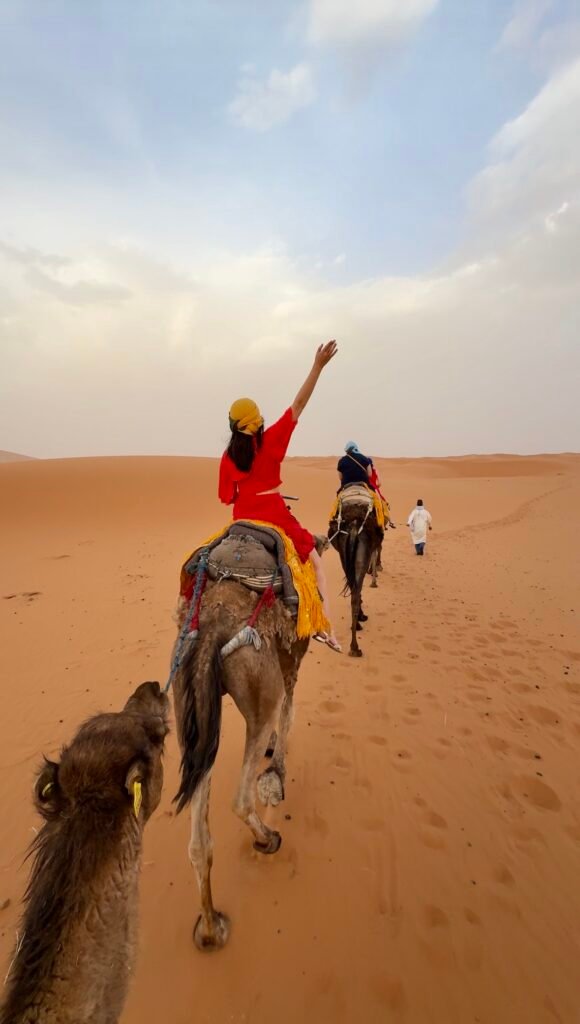
The next day, we started off slow, checking out around noon. As we drove deeper into the Sahara, we made a few stops:
- To check out ancient fossils
- To enjoy a Gnawa music show in the village of Khamlia
- To visit the Hassilabied Oasis.
Camel ride over Erg Chebbi dunes for sunset:
We reached the Erg Chebbi dunes a few hours before sunset. Known as the Sea of Dunes, Erg Chebbi is near Merzouga and features spectacular wind-blown dunes that can soar up to 150 meters high. We rode camels into the sunset for about 1.5 hours, arriving at our desert camp just as the evening sky turned to gold. This marked another memorable chapter in our Moroccan adventure.
How to get to Erg Chebbi dunes?
To reach the Erg Chebbi dunes, you have several options depending on where you start. From Rissani or Erfoud, towns about half an hour north of Erg Chebbi, it’s straightforward. Merzouga, even closer, is just a 10-minute drive south of the dunes.
The most common ways to get there is traveling by 4×4. For a more traditional experience, you can ride a camel, and for something a bit more adventurous, you can opt for a quad bike.
If you’re staying in Merzouga, you can easily book an overnight desert camp package. This typically includes a drive from Merzouga to the dunes, a camel ride at sunset, dinner, a quad bike adventure, and other activities to fully enjoy the Sahara Desert.
There are several ways to explore the Sahara Desert beyond just heading to Erg Chebbi. For instance, you can take a 3-day trip from Marrakech, which includes a visit to the famous Ait Ben-Haddou, known for its appearances in many films including “Game of Thrones”, and a trip through the stunning Todra Gorges.
Alternatively, a 3-day trip from Fes offers a chance to see the Barbary macaques and includes several other stops along the way. Each of these trips provides a wonderful way to experience the diverse landscapes and attractions of the Sahara Desert.
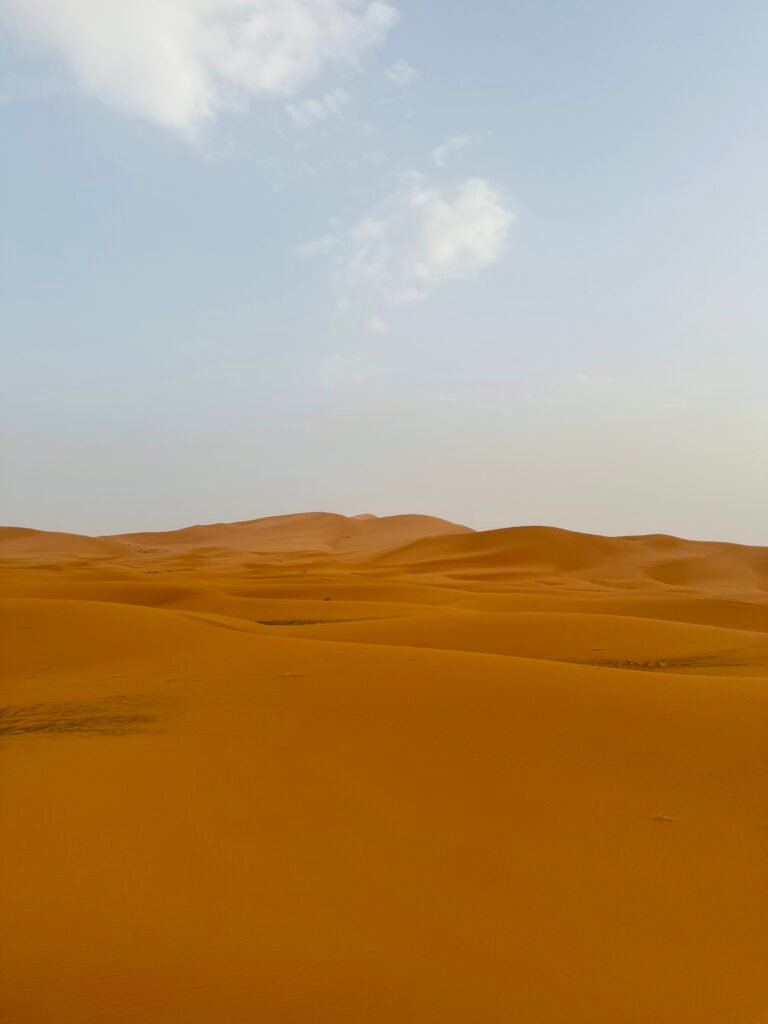
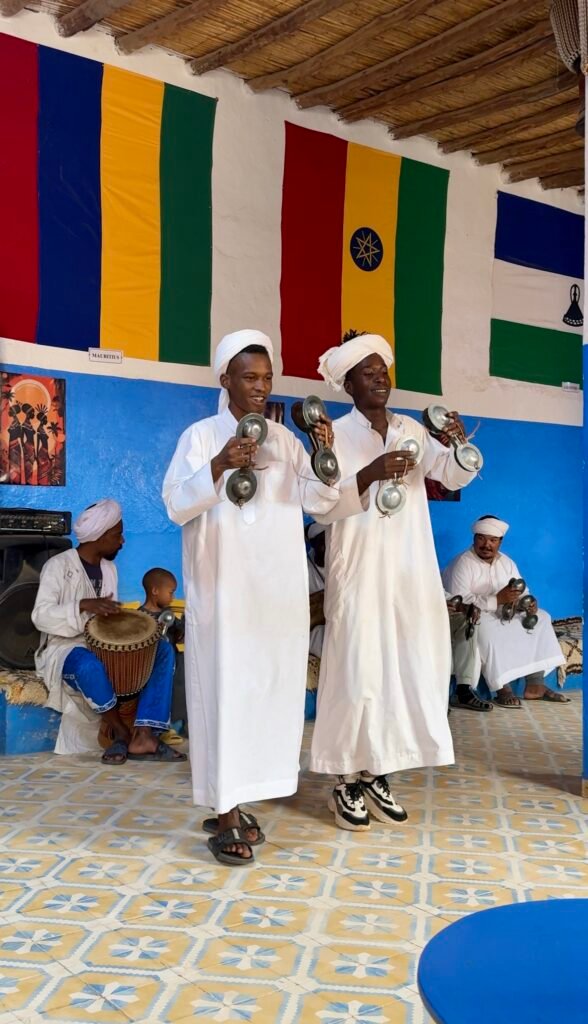
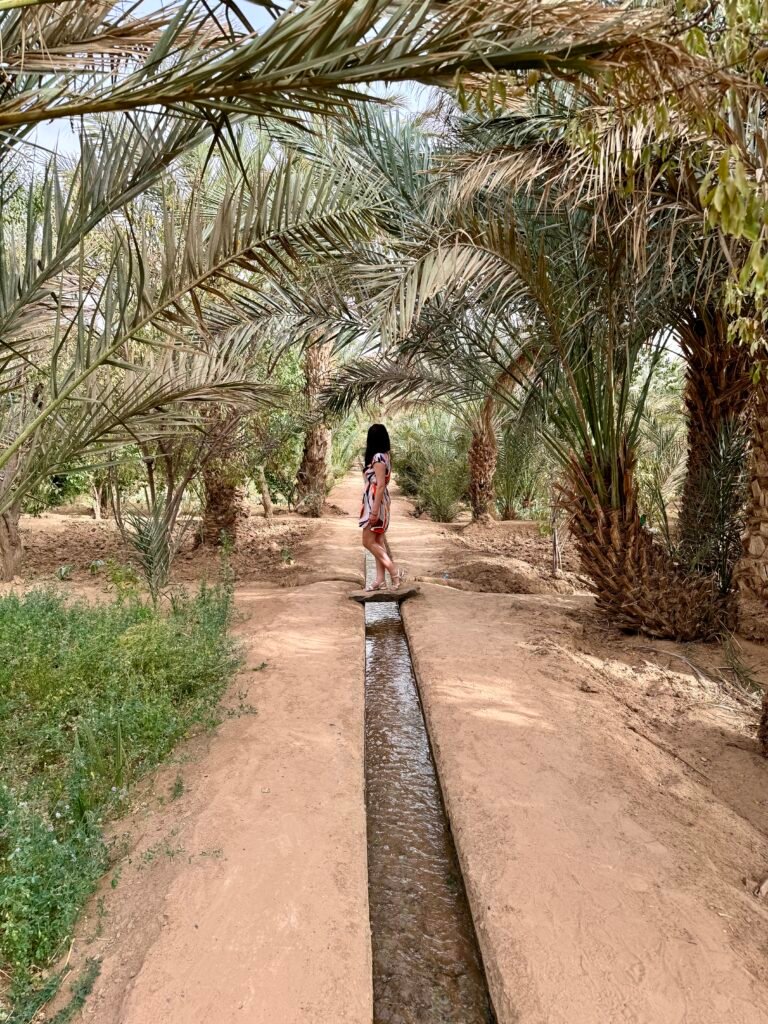
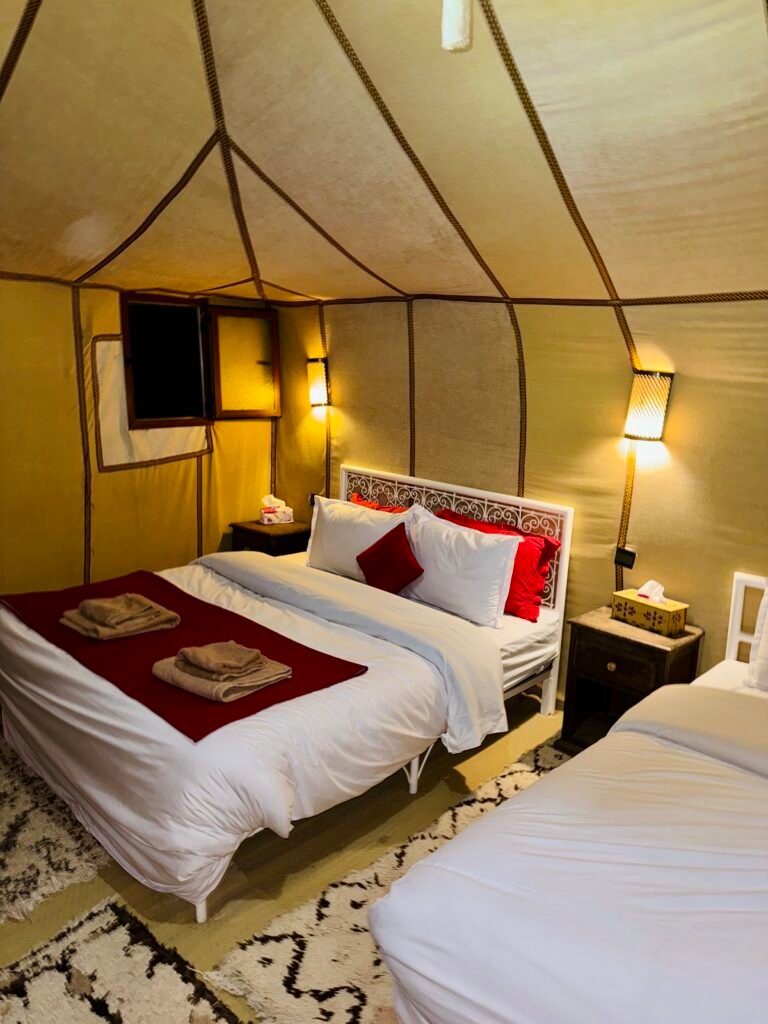
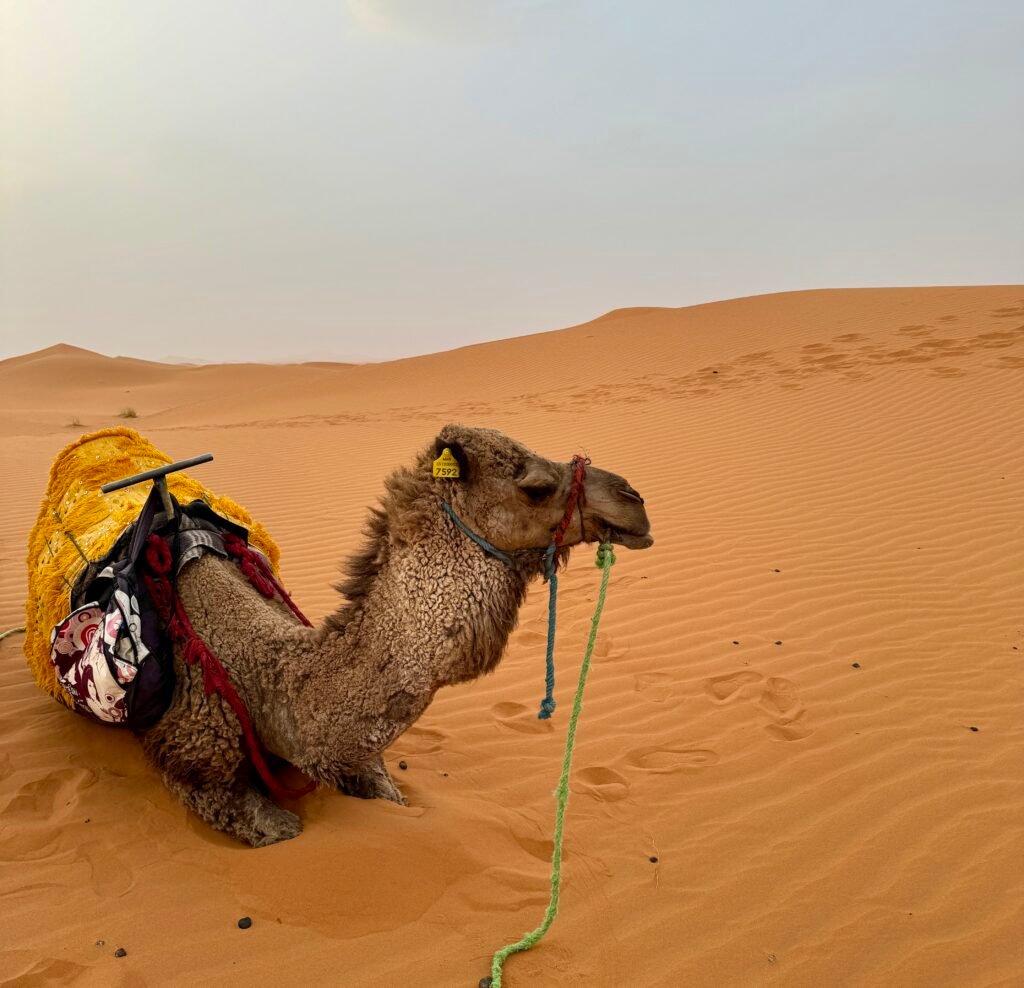
Where can I stay in Erg Chebbi?
There are several options for accommodations, whether you prefer staying in a hotel or experiencing the desert more intimately by camping under the stars. The most popular choice is the Luxury Desert Camp, which offers a comfortable yet authentic tent to sleep in.
Is it worth visiting the Erg Chebbi dunes?
Absolutely! If you enjoy activities like quad biking, sandboarding, or just want to camp under the stars, Erg Chebbi is a fantastic choice. The experience of riding a camel into the dunes at sunset and sleeping in luxurious tents is something truly special.
DAY 5
Todra Gorge & stay in a 18th-century Kasbah
First stop: Todra Gorge
We woke up early again and set off from the vast Sahara sands, heading west towards a unique overnight destination – an 18th-century Kasbah.
Our day began with a three-hour drive to the Todra Gorge. Located in the rocky Atlas Mountains on the route to the Sahara from Marrakech, the gorges offer a natural oasis formed over centuries by the River Todra cutting through limestone. The gorge appears almost prehistoric, with towering canyon walls that are over 400 meters high. It’s a perfect spot for a brief 15-minute walk to stretch your legs after long hours on the road. However, if you decide to spend the day, there’s plenty to do.
Things to do in the Todra Gorges:
- Picnic and hiking
- Mountain biking
- Rock climbing
- Wander through the Todra Palmeraie, a lush palm grove that feels like an oasis.
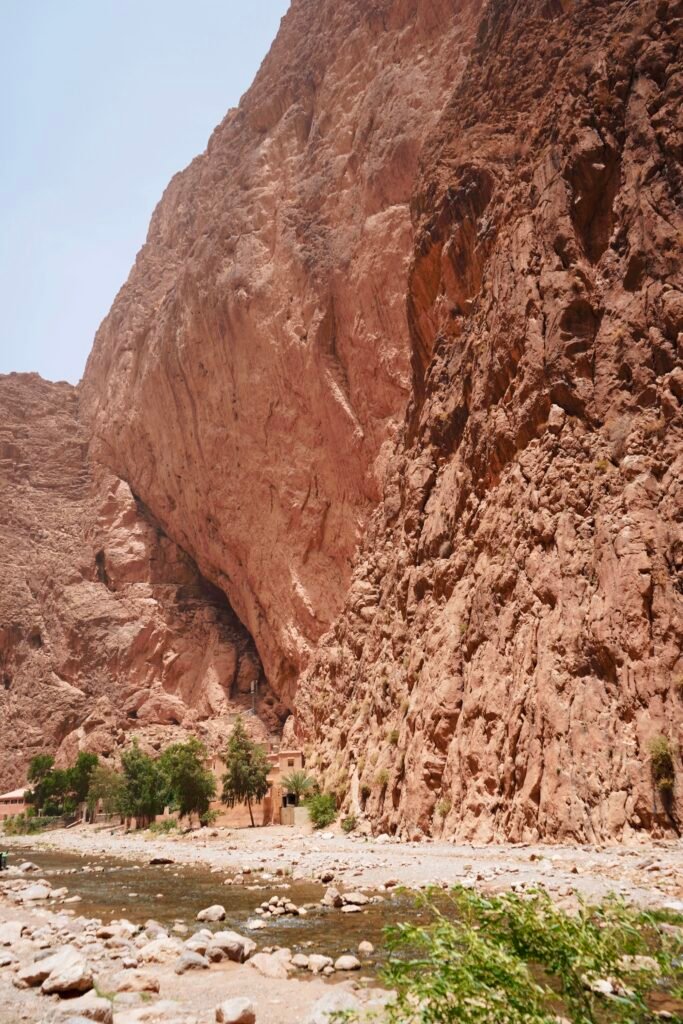
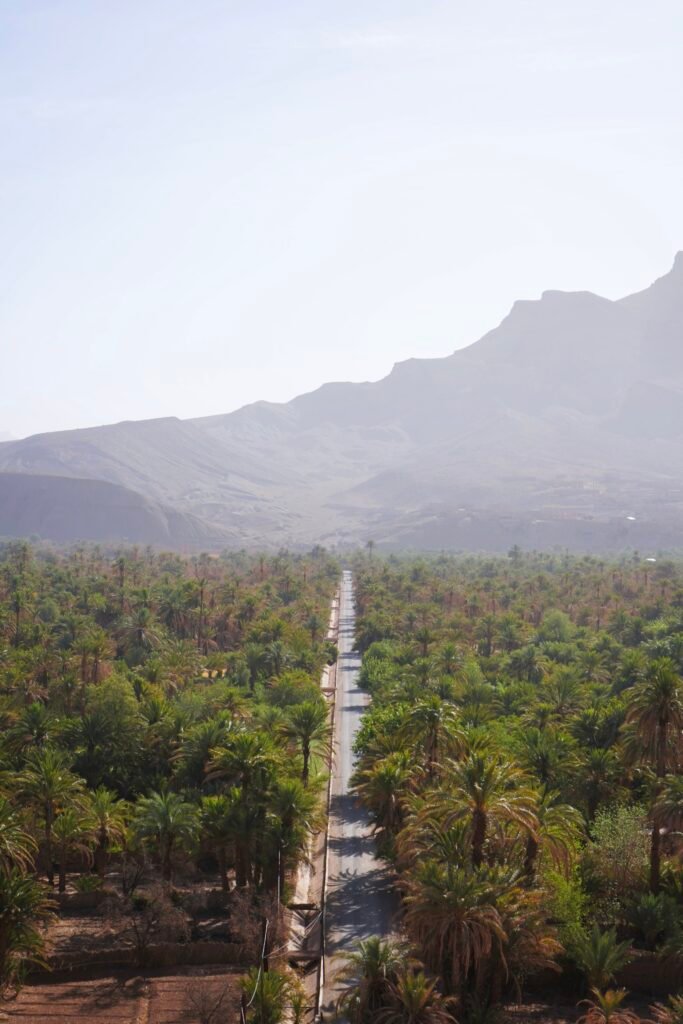
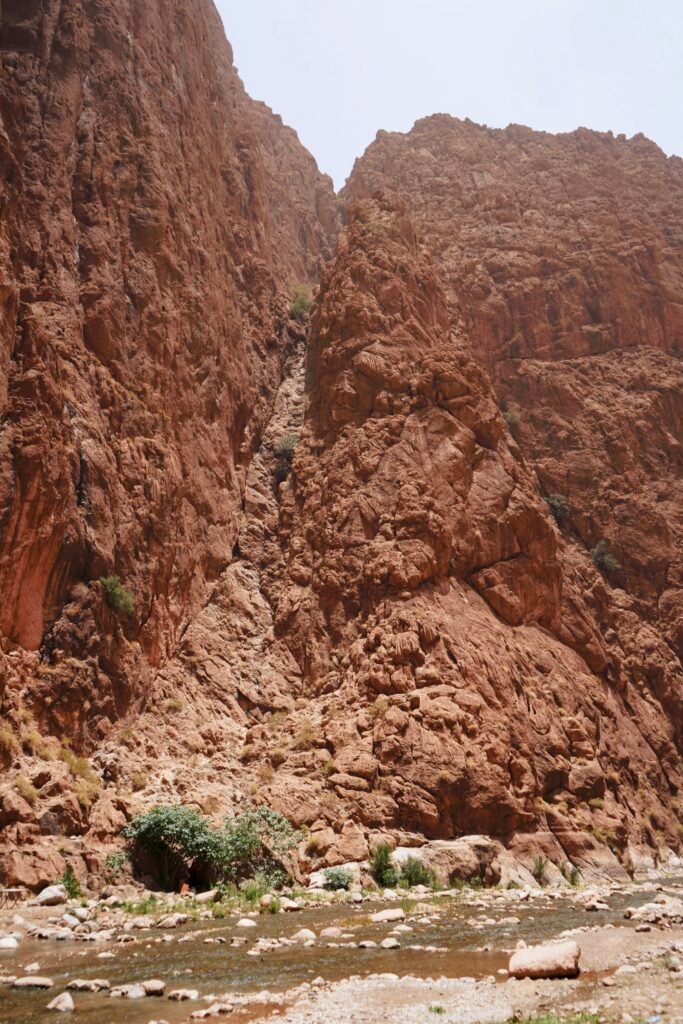
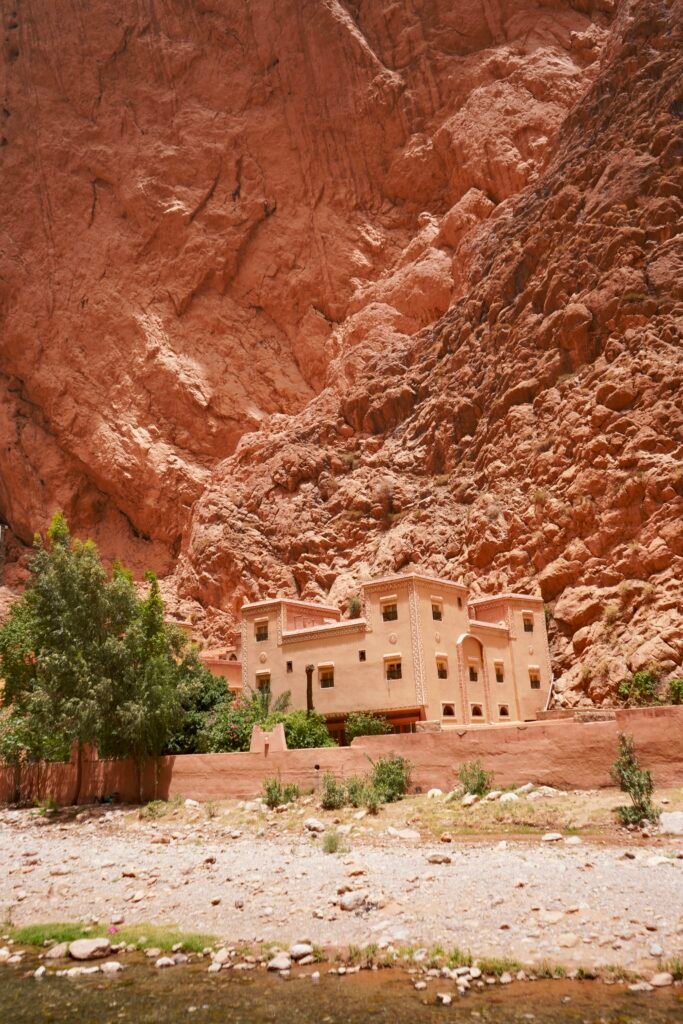
Second stop: 18th-century Kasbah

After leaving the gorges, we continued driving for another five hours to reach Kasbah Oulad Othmane by the afternoon.
We mainly stopped there to enjoy the authentic experience of staying in an 18th-century kasbah and to break up the long drive to Marrakech, which can take about 10 hours with stops (from Merzouga). This village doesn’t have much in terms of attractions or activities.
A kasbah is typically a fortress, often serving as the citadel or fortified part of a city. This particular Kasbah, set within an 18th-century fortress, features rooms decorated with vibrant, traditional Moroccan designs.
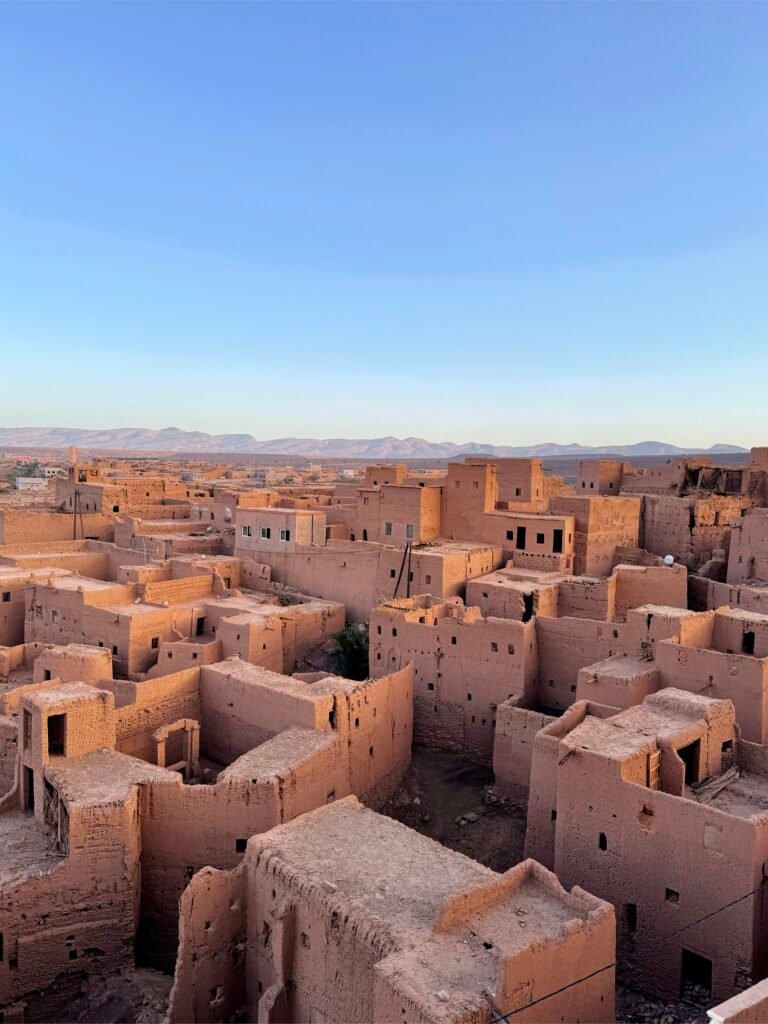
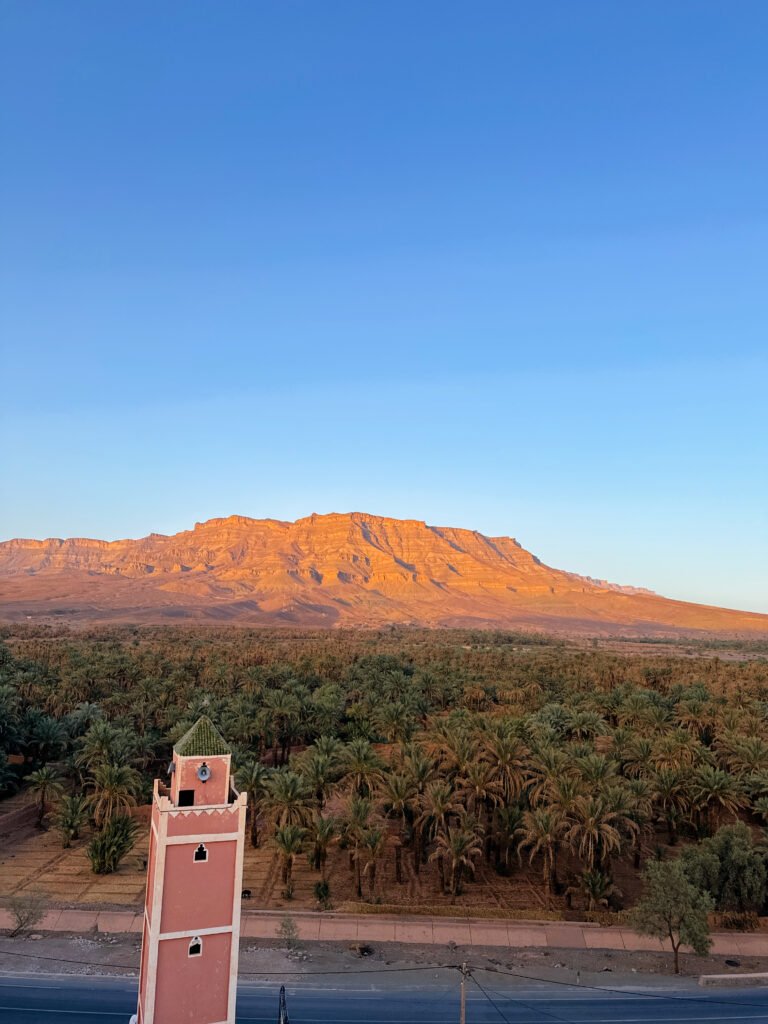
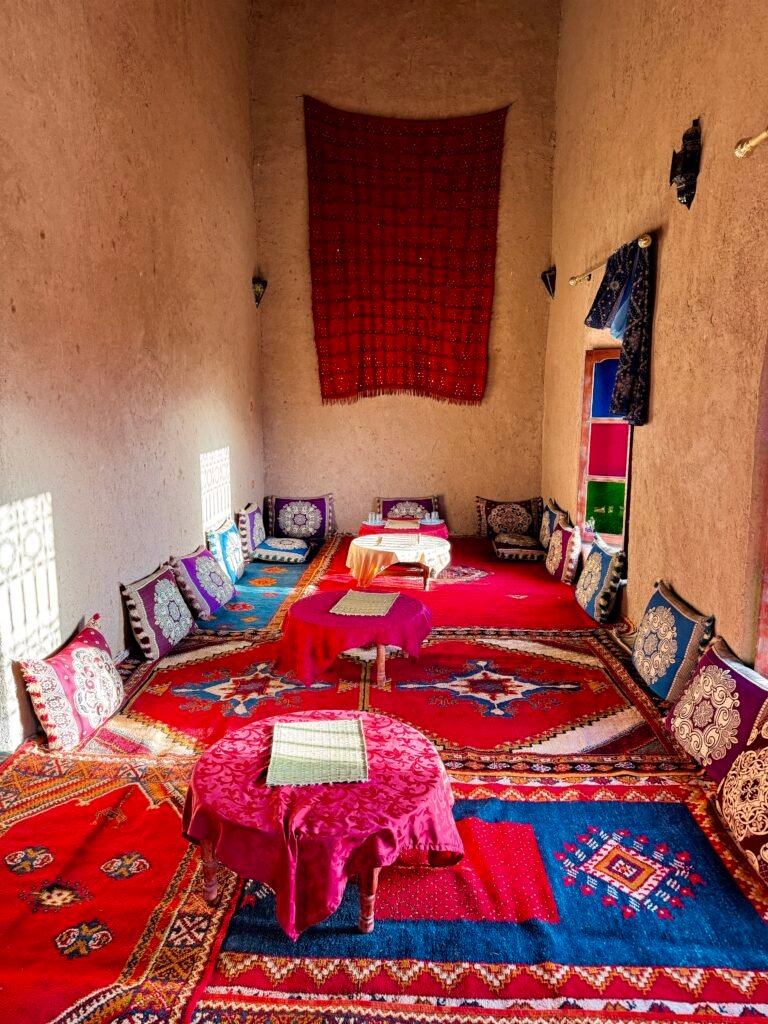
DAYS 6 – 8
Ksar Aït Ben-Haddou & Marrakech
First stop: Aït Ben-Haddou
We started our day early with a quick breakfast before undertaking a four-hour drive west towards Marrakech.
Our journey took us first to Ouarzazate where we visited the Ksar Ait Ben-Haddou, a renowned filming location for iconic movies and series like Game of Thrones, Gladiator, The Mummy, and Prince of Persia. This UNESCO World Heritage Site is celebrated for its traditional Moroccan earthen clay architecture.
Exploring Aït Ben-Haddou, we walked through its narrow streets and alleyways, climbing rough-hewn steps and passing between houses. While many homes were modest, there were also several grand kasbahs. Throughout the village, we observed street artists at work and explored shops and stalls selling a variety of mementos.
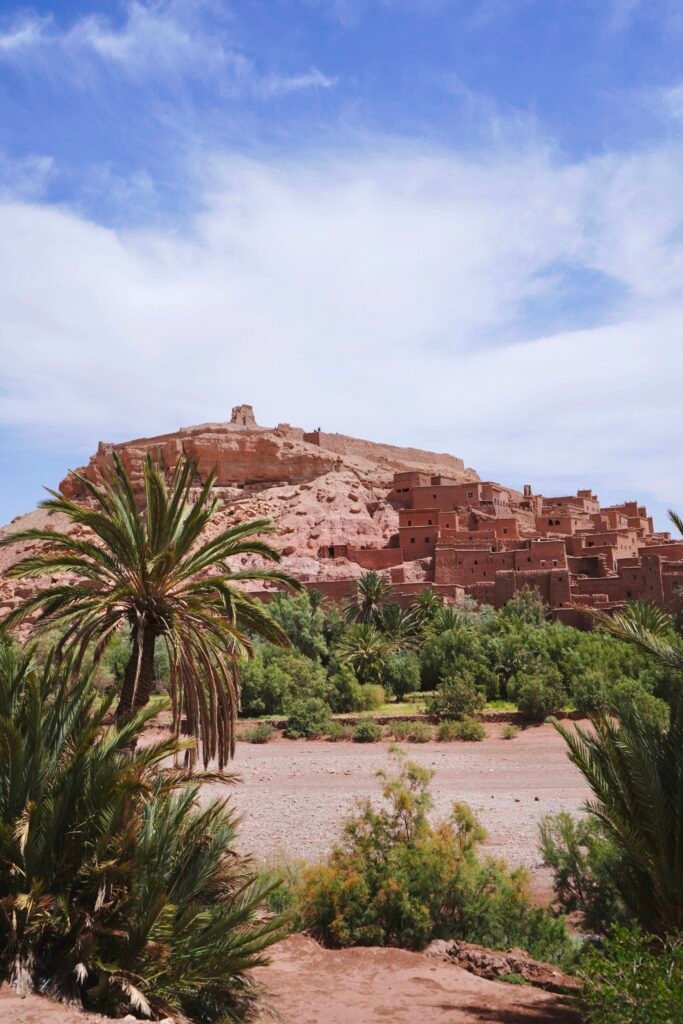
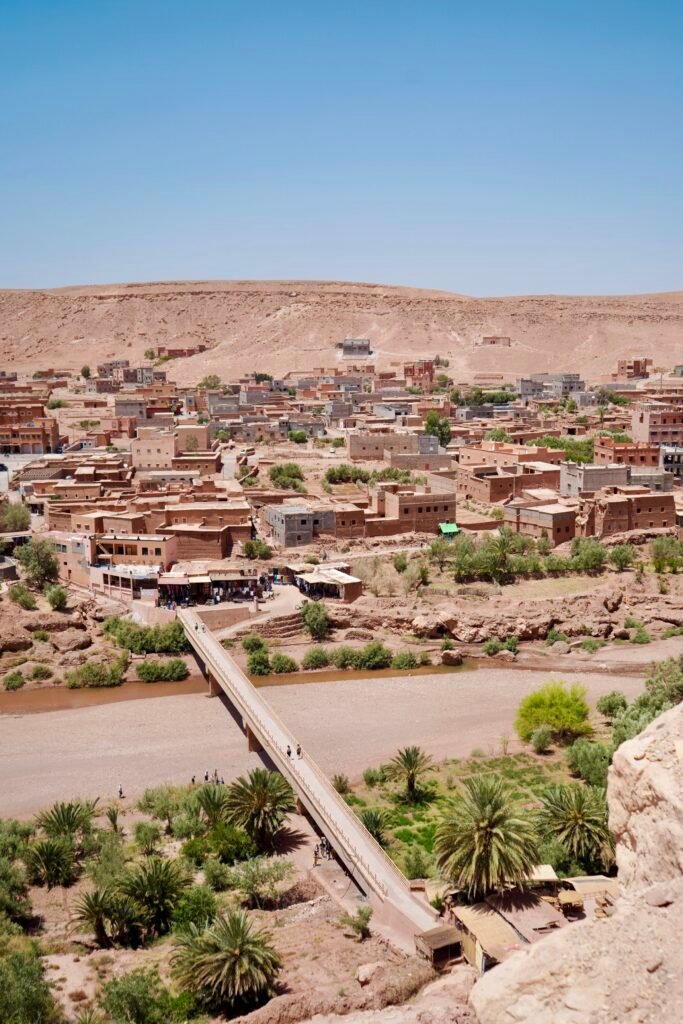
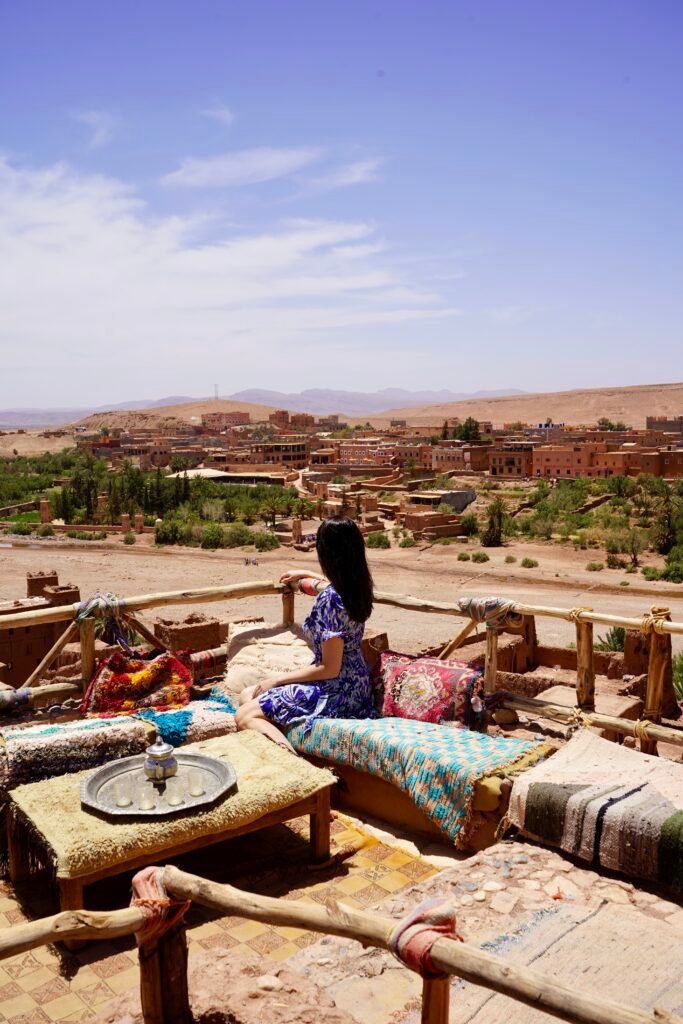
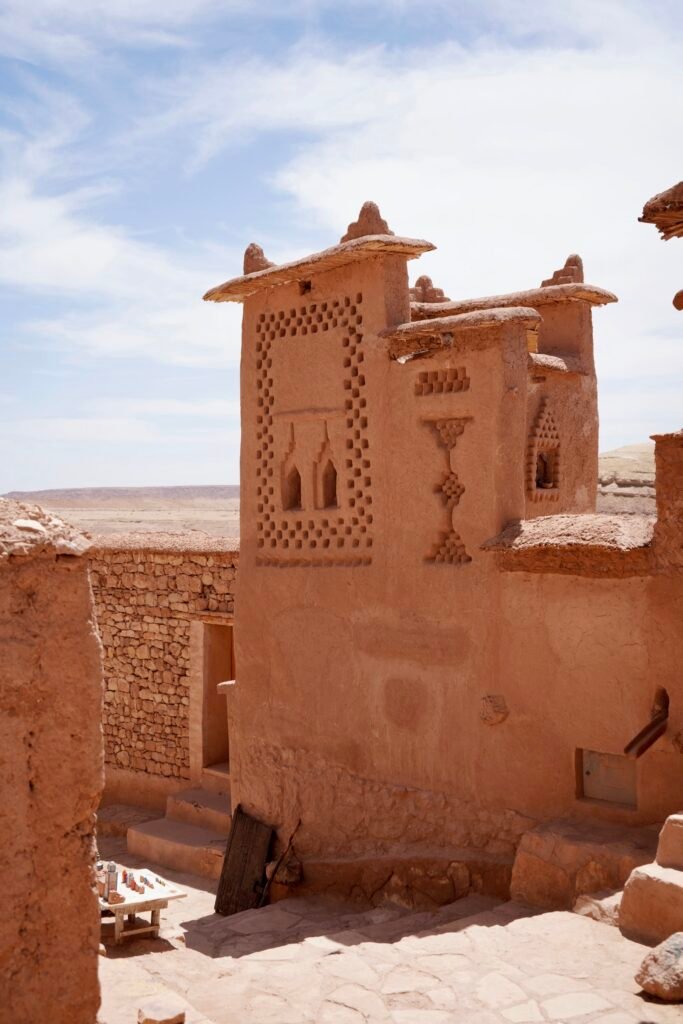
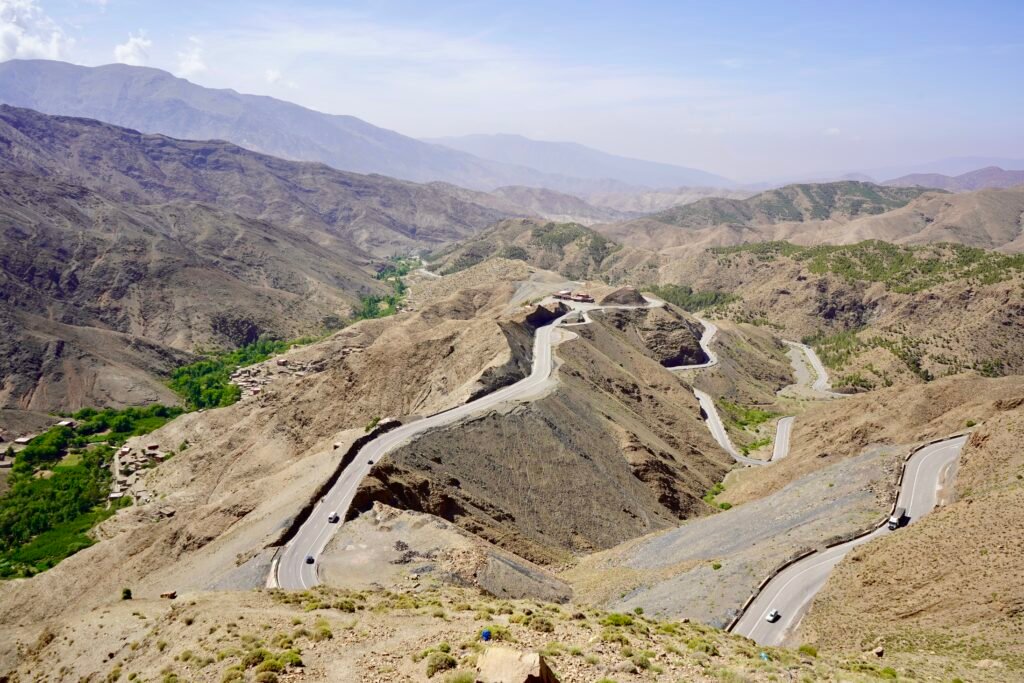
Is Aït Ben-Haddou worth visiting?
Absolutely, it’s a worthwhile visit for 1-2 hours, perfect for a quick exploration and lunch before continuing your journey.
We then crossed the Atlas Mountains via the Tizi n’Tichka Pass, enjoying the stunning landscapes, and arrived in Marrakech by late afternoon. The vibrant chaos of Marrakech was a contrast to the calmer cities we had visited.
Second and last stop for this trip: Marrakech
Where to stay in Marrakech:
We stayed in the picturesque Riad Oriental Glory & Spa located in the old medina. Staying in the old town is essential to fully experience the charm of Marrakech.
Best places to visit in the old Medina of Marrakech:
We dedicated two full days to exploring Marrakech. Here’s a guide to the must-visit spots in this vibrant city, particularly in the historic old Medina:
- El Badi Palace: Wander through the ruins of Sultan Ahmed al-Mansour’s magnificent palace, with its sunken gardens and orange trees set against epic ramparts offering panoramic views over the medina.
- Souk Semmarine: Often likened to Bond Street, this bustling market is famous for its vibrant carpets, cut brass lanterns, exquisite leatherwork, and traditional babouches.
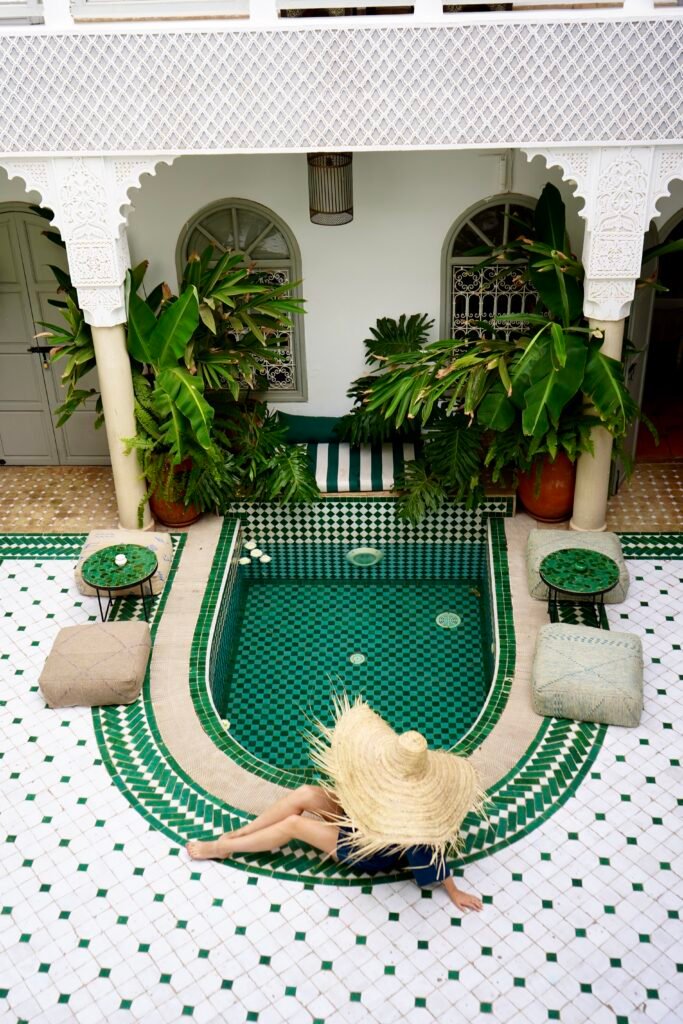
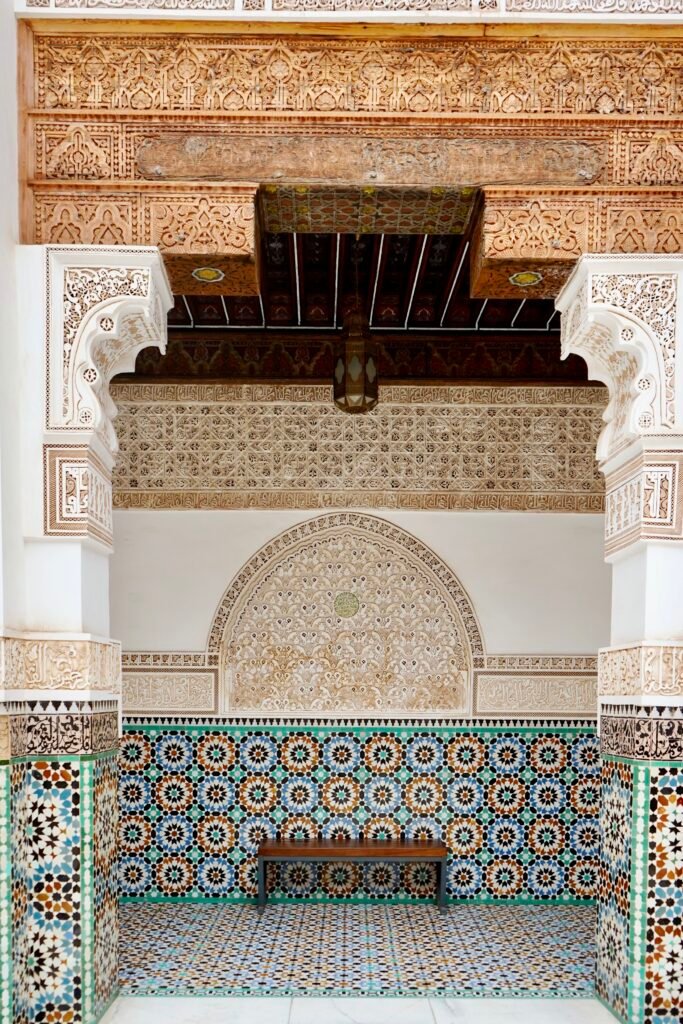
- Medersa Ben Youssef: A 14th-century religious school offering a glimpse into the rich architectural history of Marrakech. It’s advisable to book tickets online.
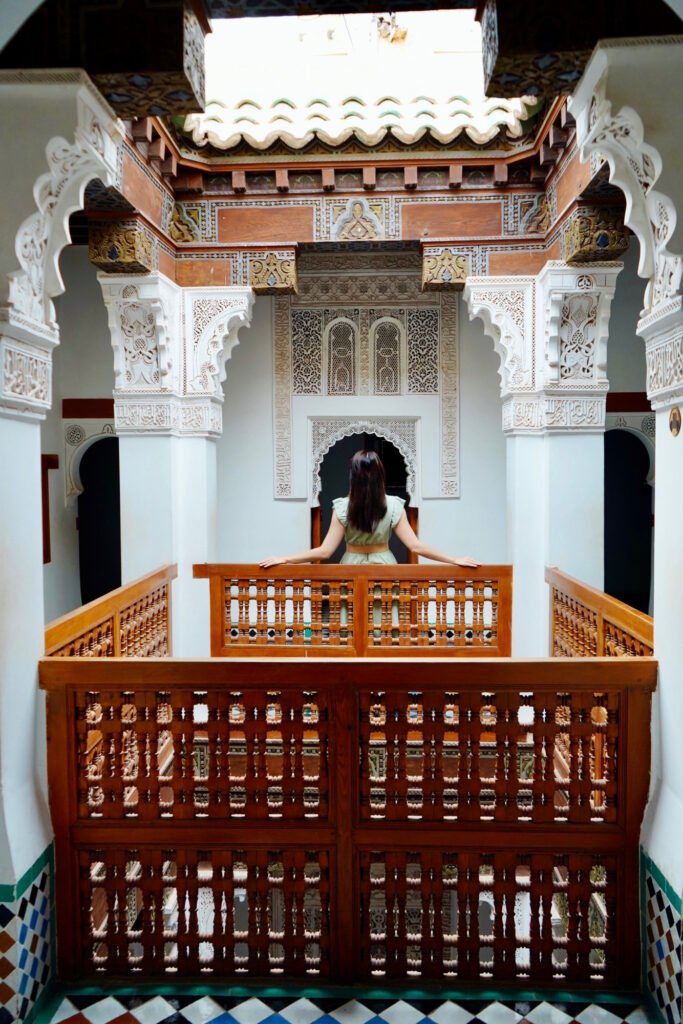
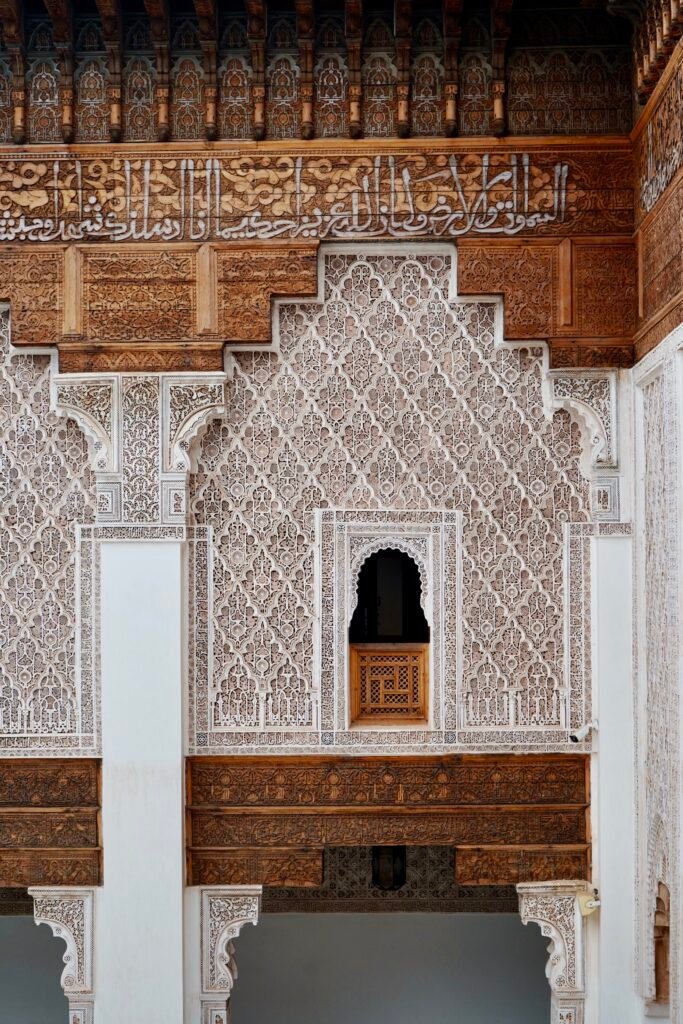

- Bahia Palace: Built in the late 19th century, the “beautiful palace” is now a central piece of the city’s cultural life.
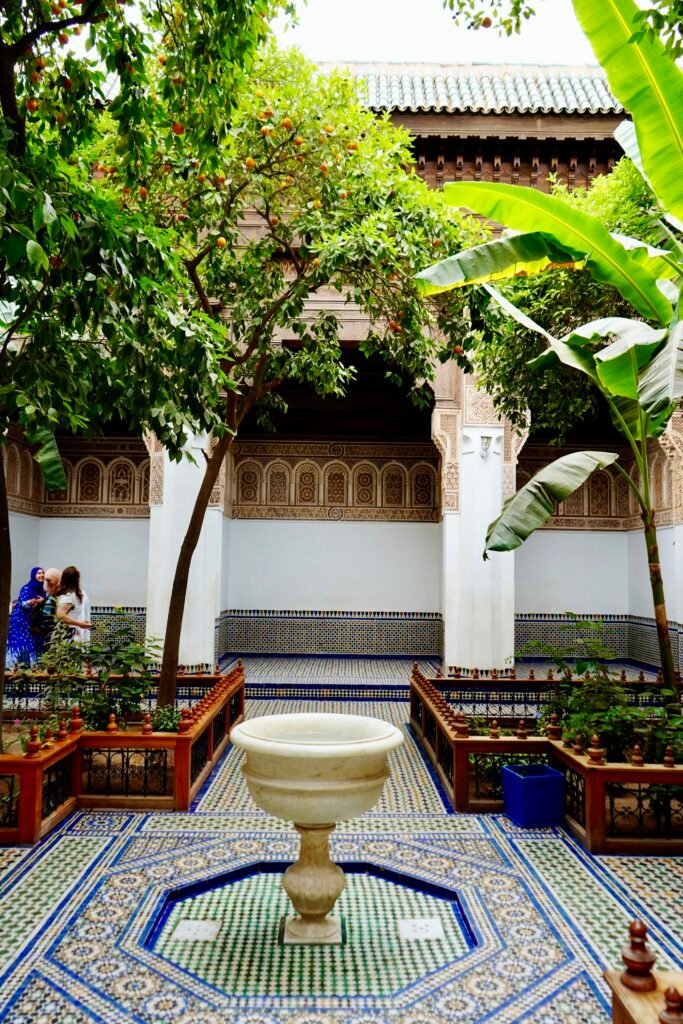
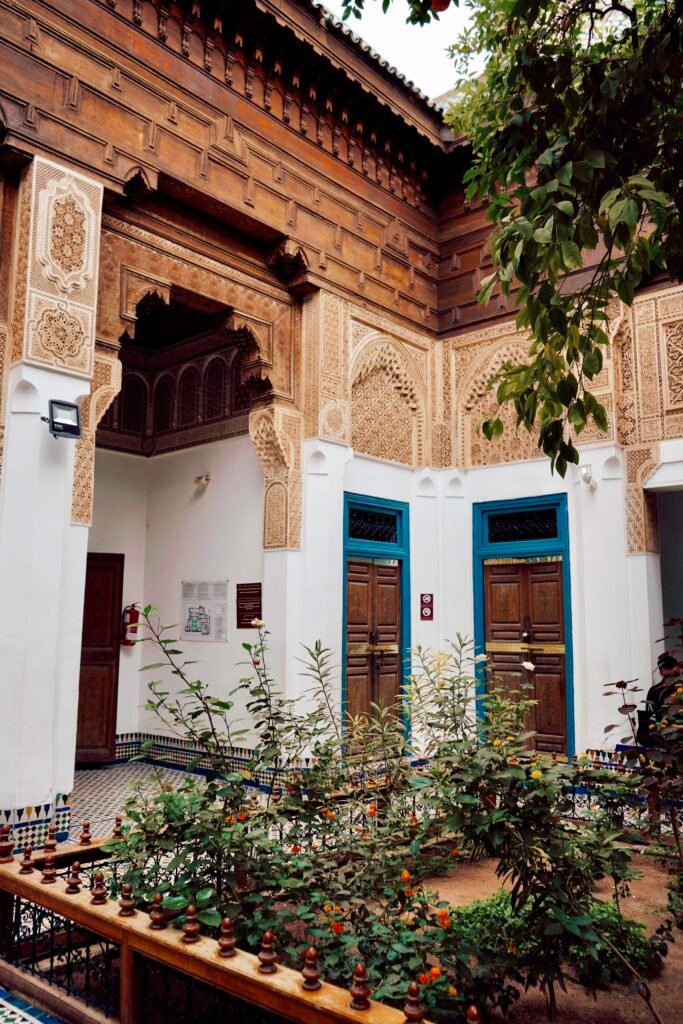
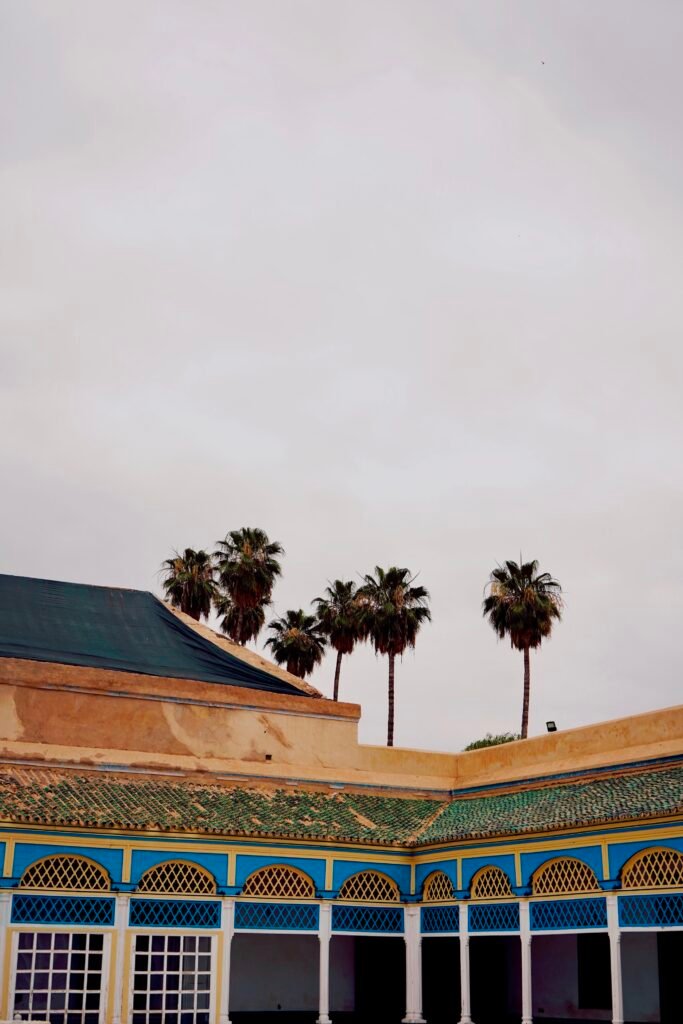
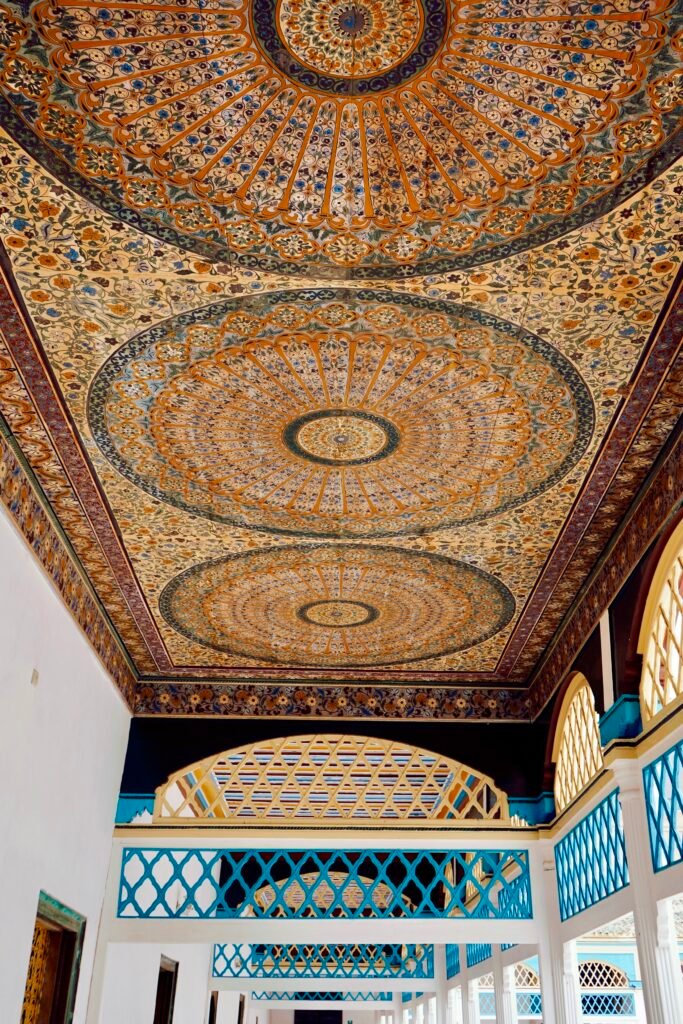
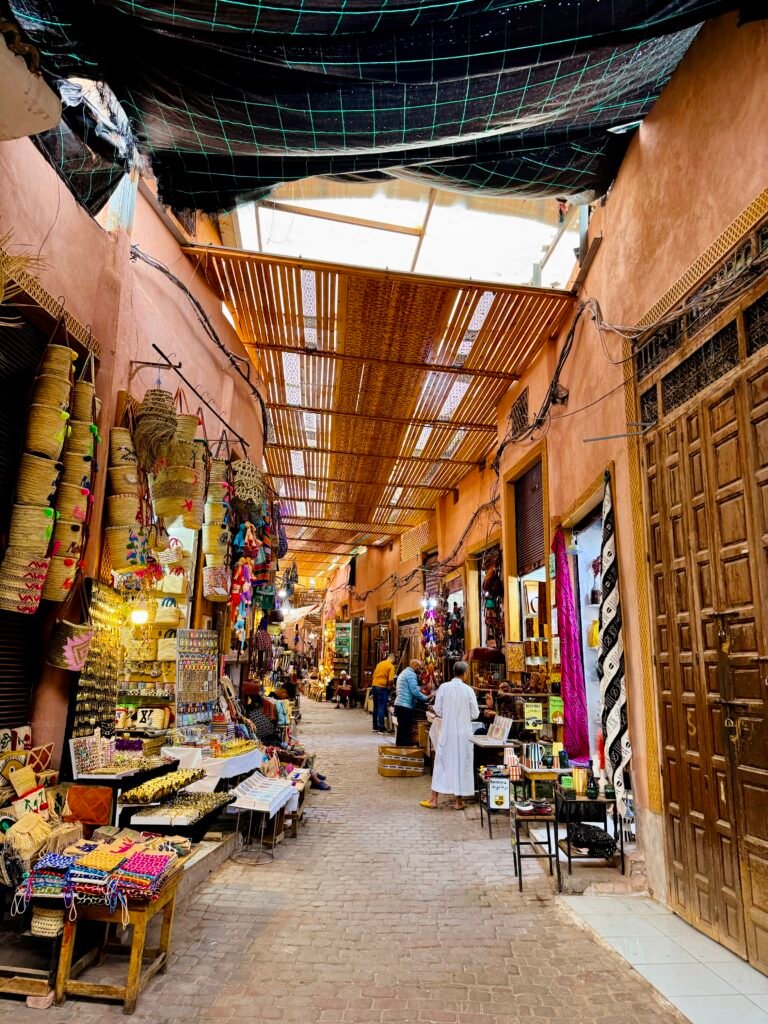
- The Mellah: the ancient Jewish quarter, which has seen extensive restoration, reinstating Jewish street names and preserving unique architecture. Highlights include the 16th-century Al Azama synagogue and the sprawling Miaara cemetery, the largest Jewish cemetery in Morocco.
- Musée des Confluences: Housed in the former governor’s palace, this museum explores the intersection of Eastern and Western cultures through exhibitions and performances, drawing on the archaeological collection of American Patty Birch.
- Musée de Mouassine: Set in a beautifully preserved 16th-century Saadian douiria (guest apartment), this museum not only showcases its stunning original decorations but also hosts thoughtful exhibitions and musical events.
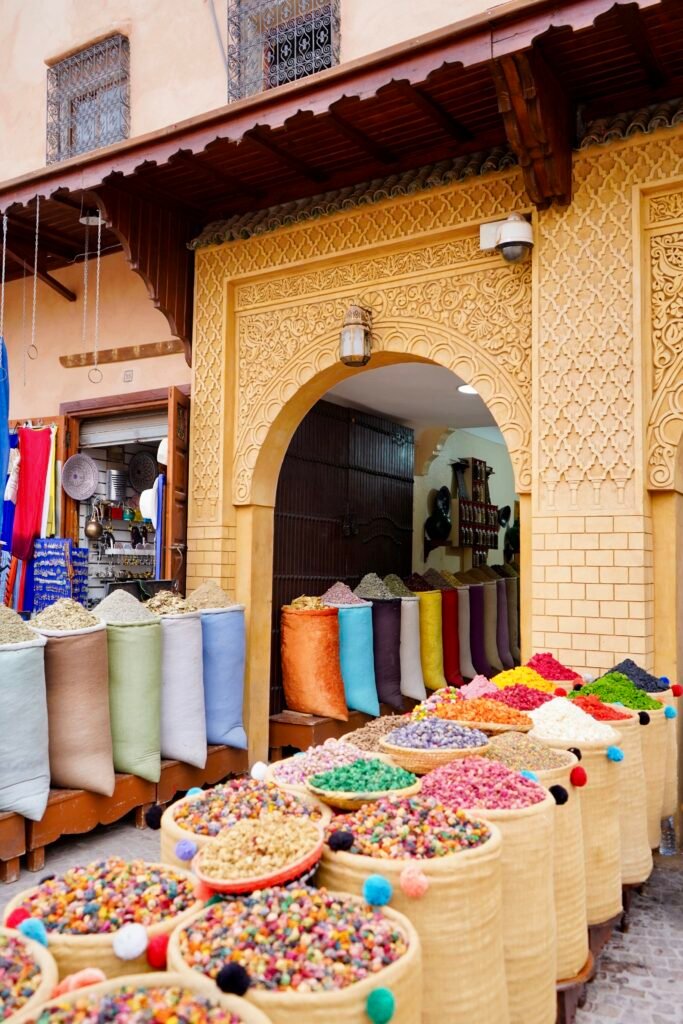
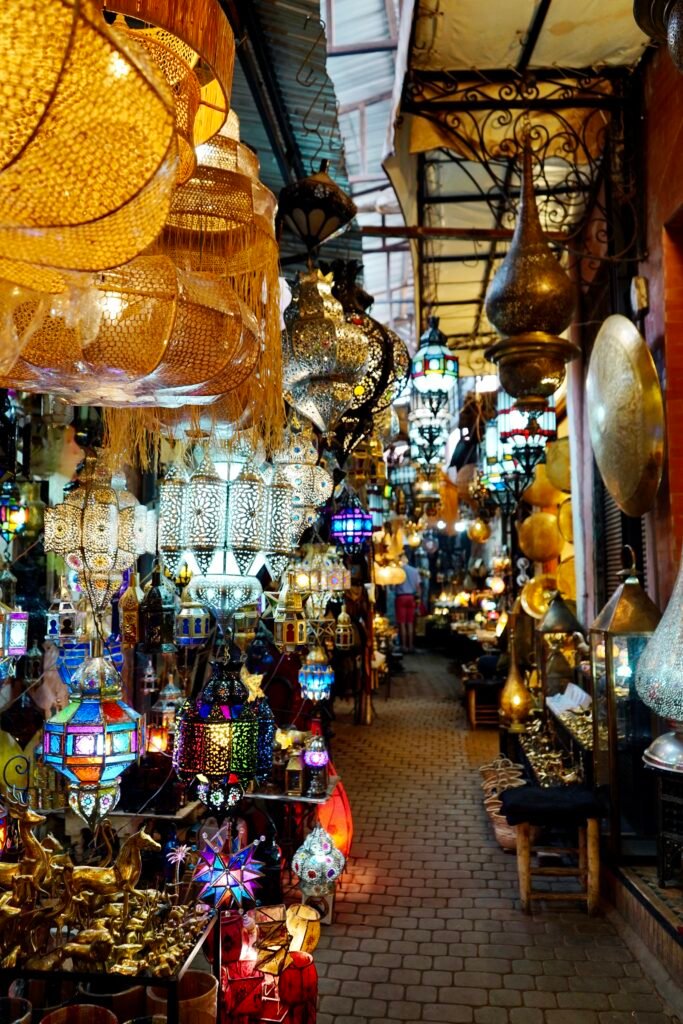
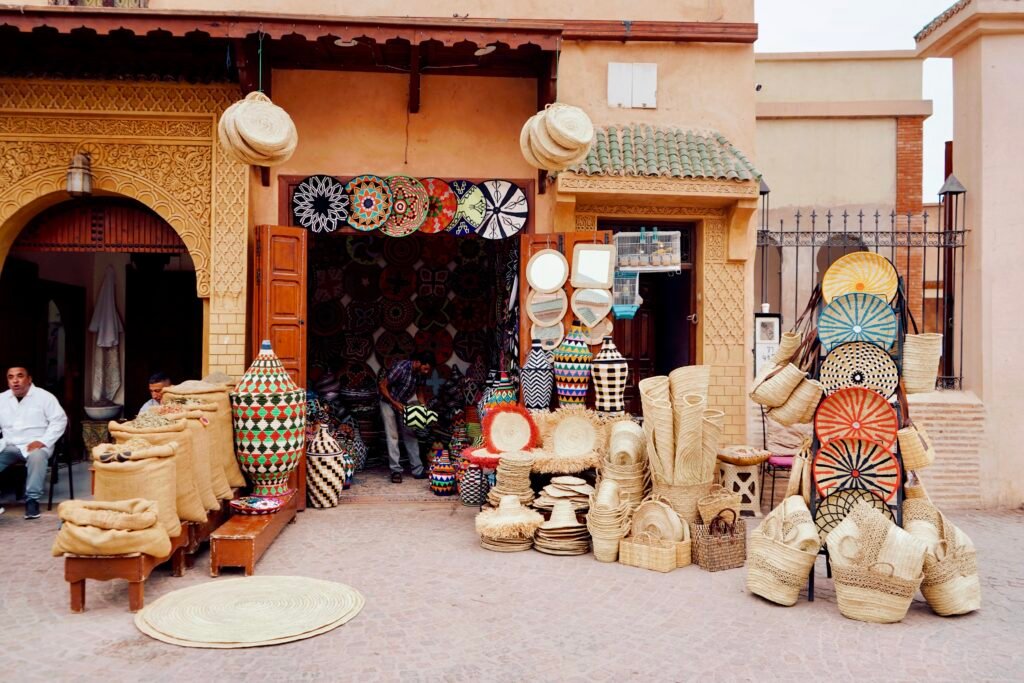
- Jemaa el-Fna: This vast, open square lies at the heart of the medina and is a bustling hub of activity, featuring snake charmers, street entertainers, and henna artists. At night, it transforms into a lively festival of street theatre and food stalls.
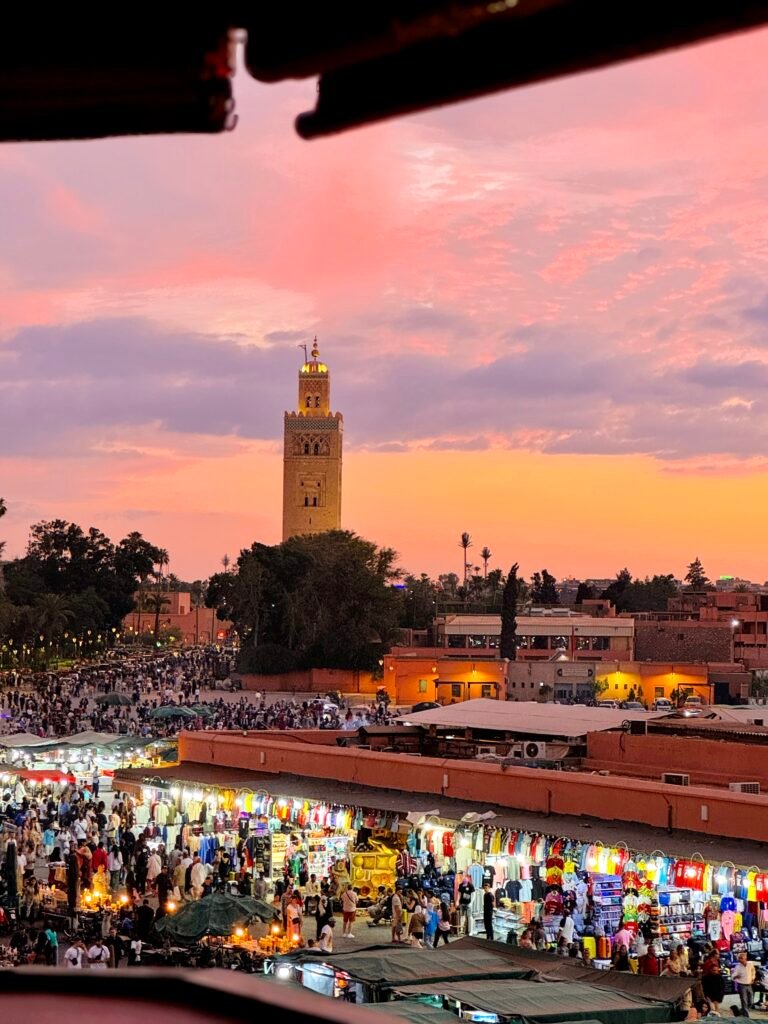
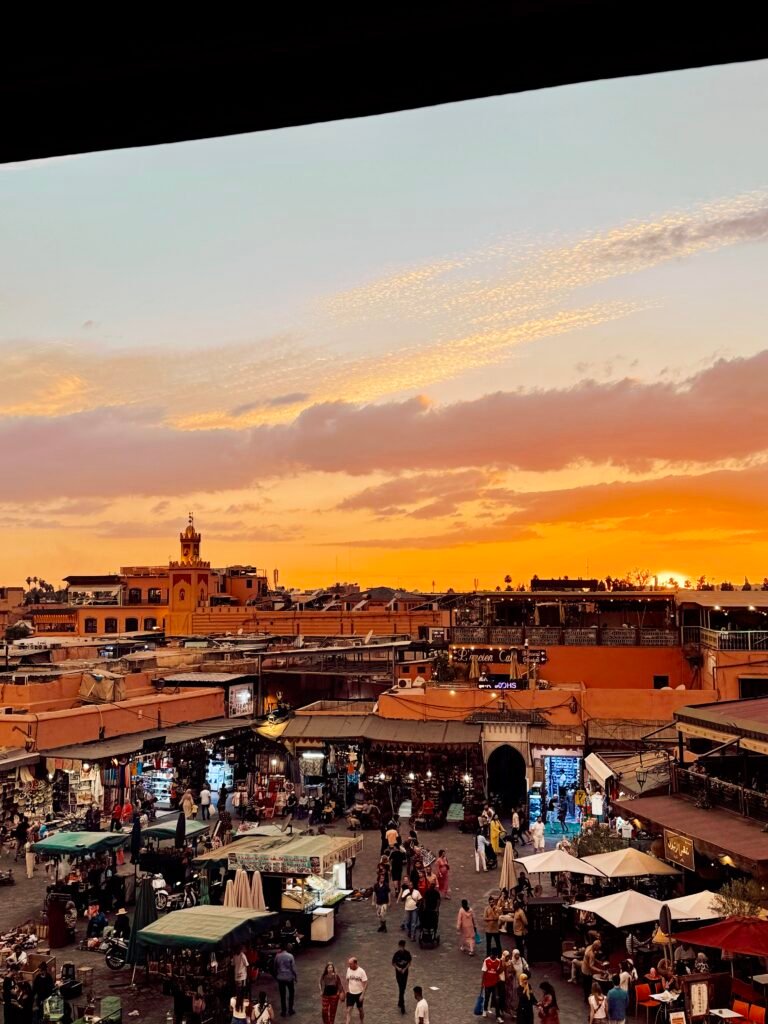
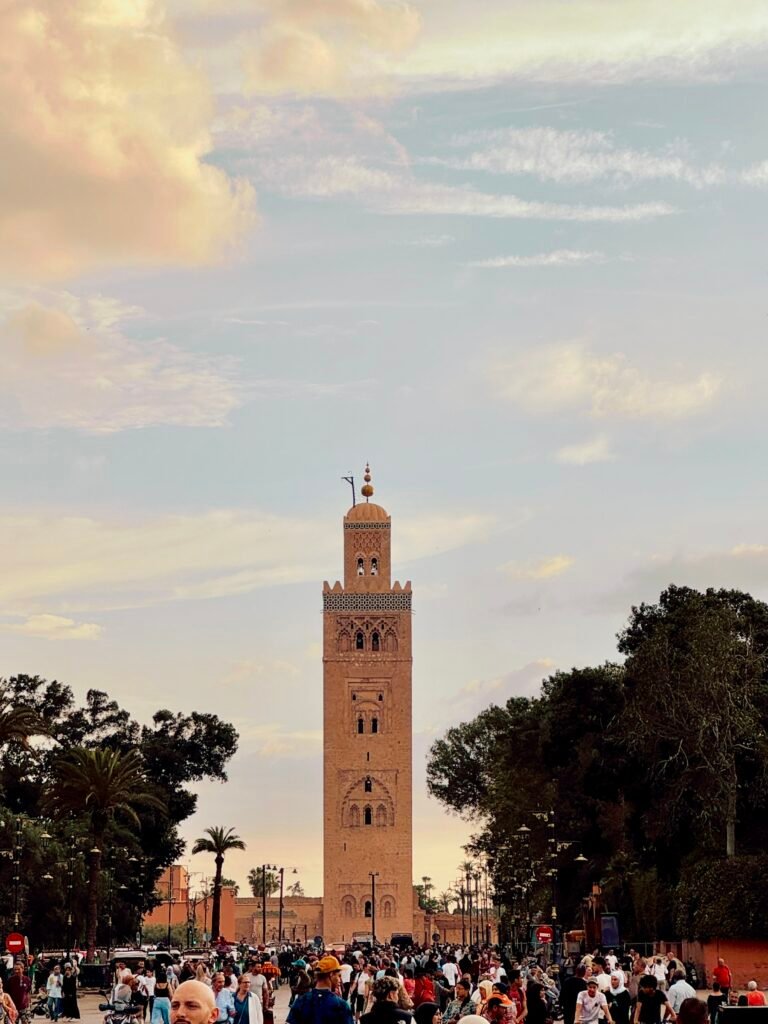
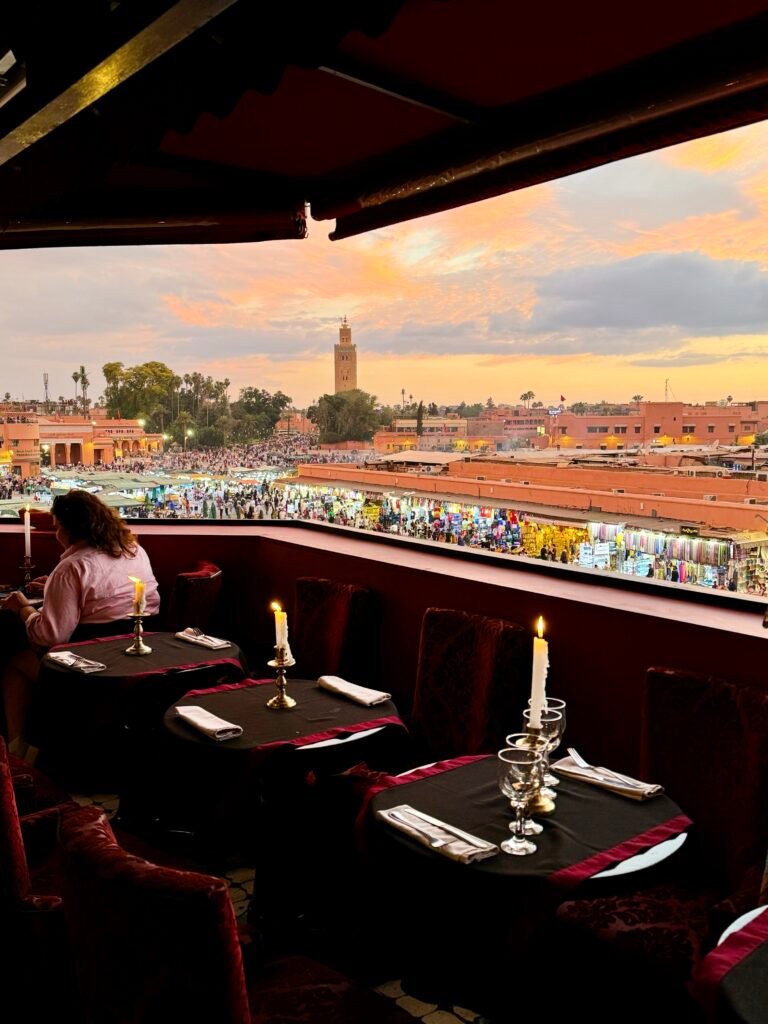
Best places to visit in the outside of the old Medina of Marrakech:
- Contemporary Art Crawl in Gueliz: Often referred to as the ‘New Town’ of the 1930s, Gueliz is not just about cafes and shopping. It’s also a vibrant hub for modern and contemporary art. Stroll through galleries like Galerie Siniya 28, Galerie 127, and Comptoir des Mines to immerse yourself in the city’s thriving art scene.
- Yves Saint Laurent’s Garden (Jardin Majorelle) and Museum (on the pictures): Renowned French designer Yves Saint Laurent was so captivated by Marrakech that in 1980, he purchased the Jardin Majorelle. This vibrant garden is a serene escape from the city’s hustle, while the adjacent Musée Yves Saint Laurent pays homage to his couture legacy, showcasing hundreds of garments from his 40-year career. To skip the queues, it’s wise to book your tickets online. For the best experience, plan your visit early in the morning or late in the evening to dodge the crowds.

